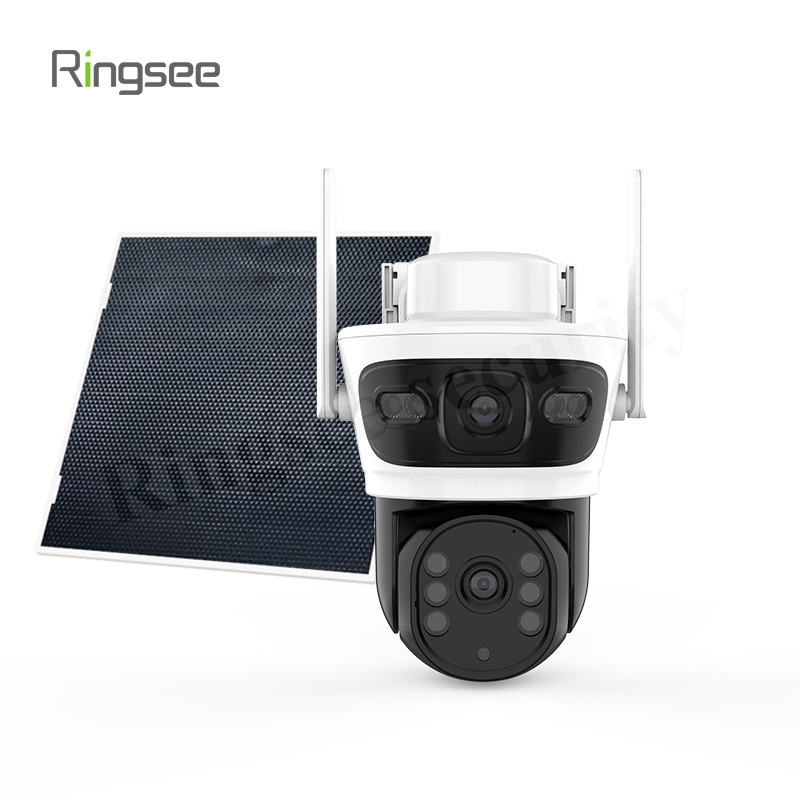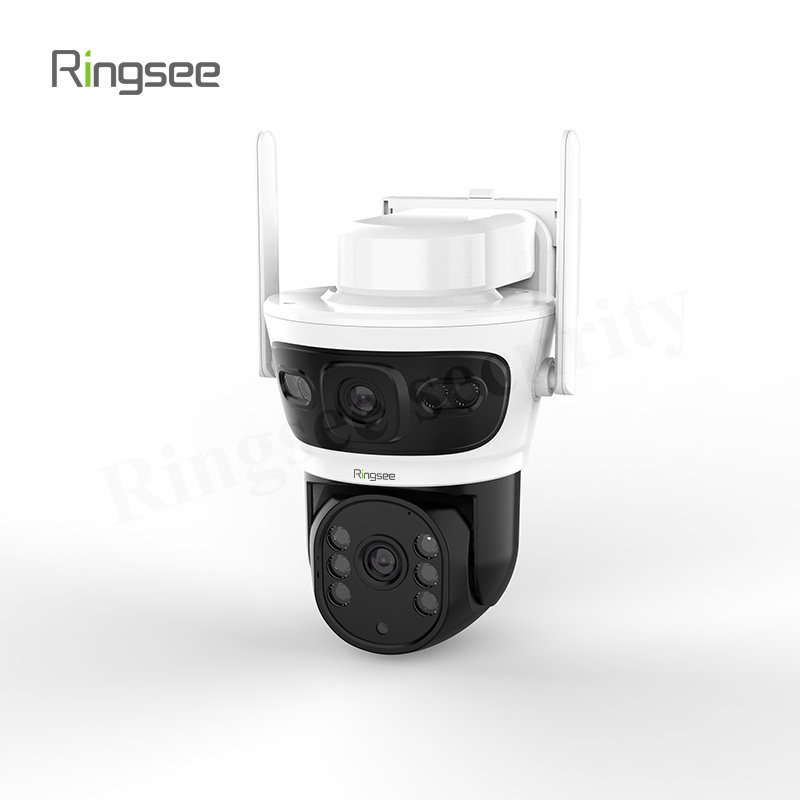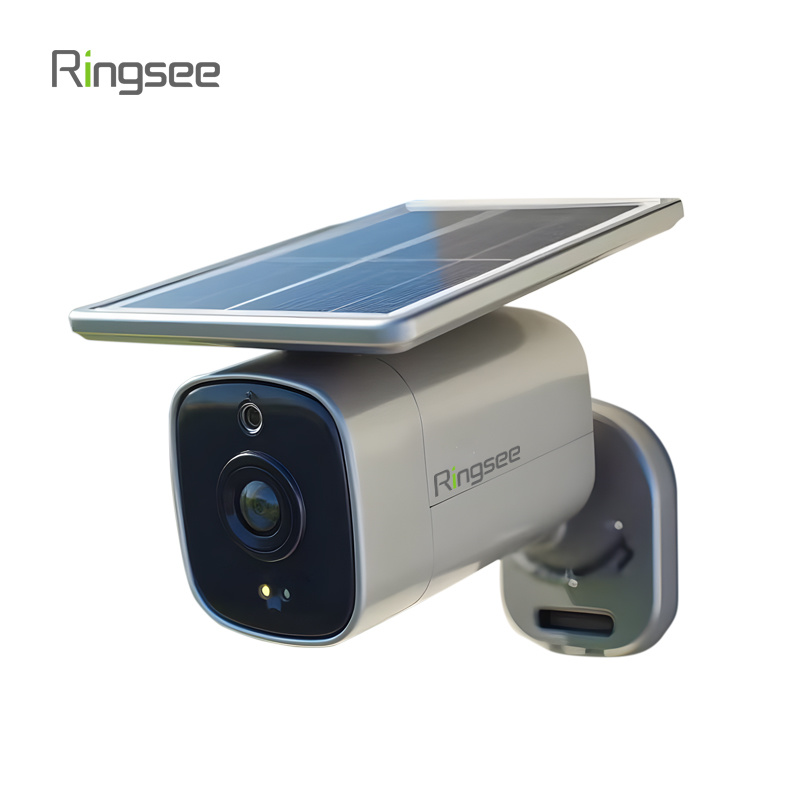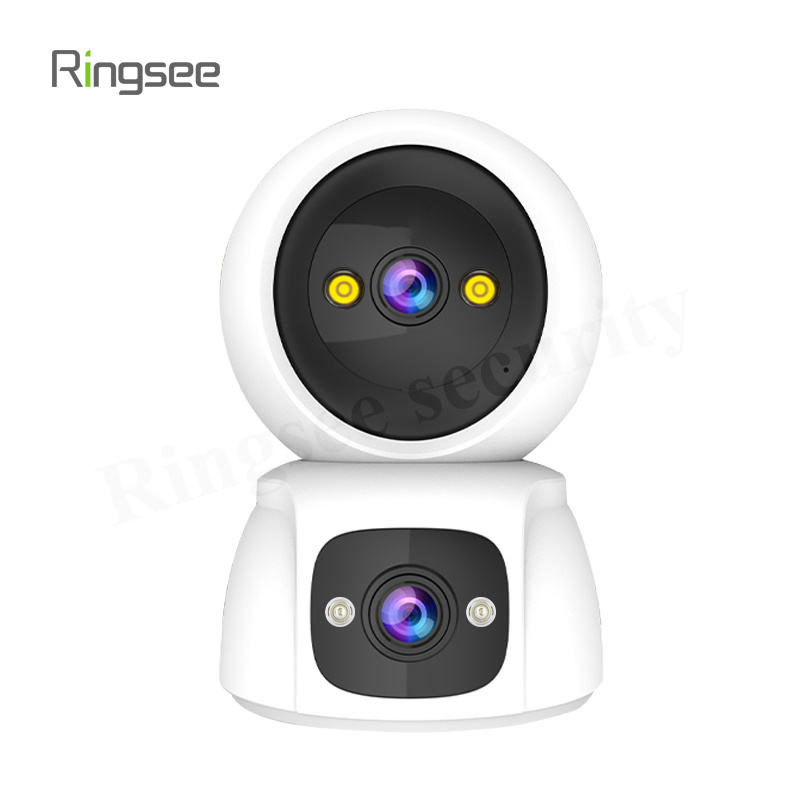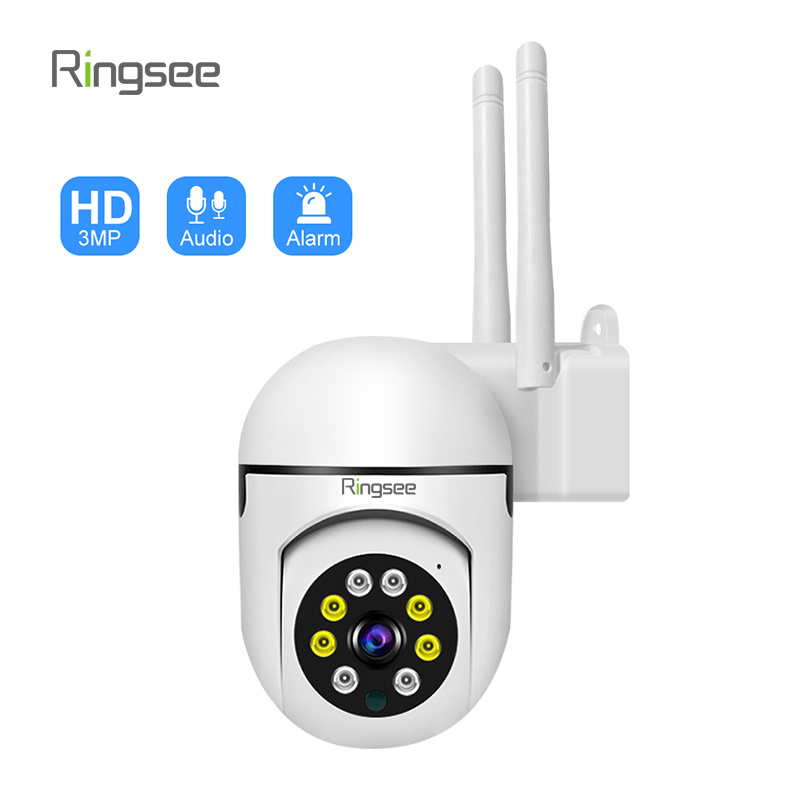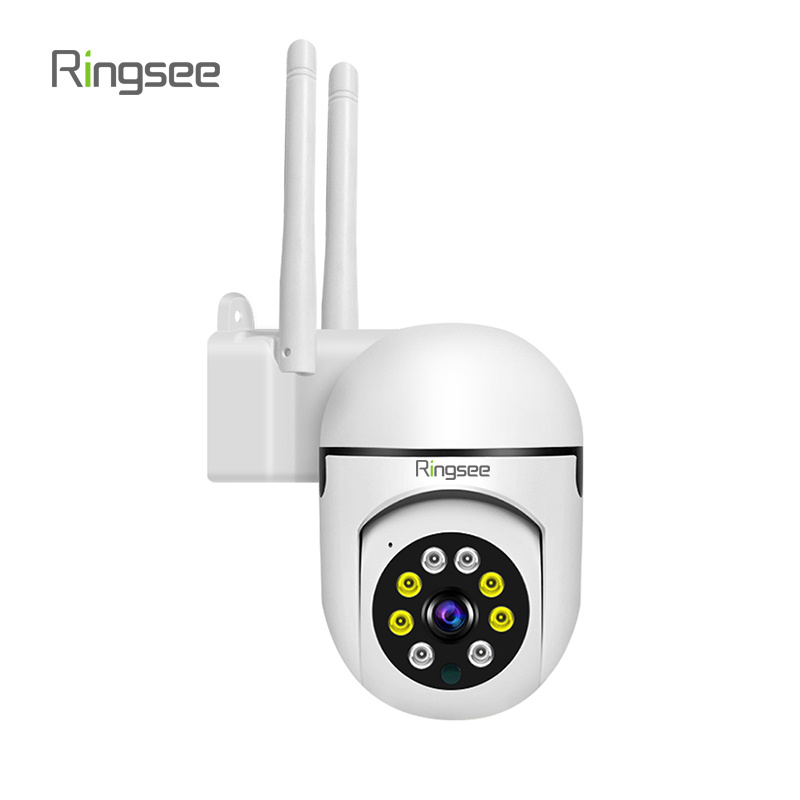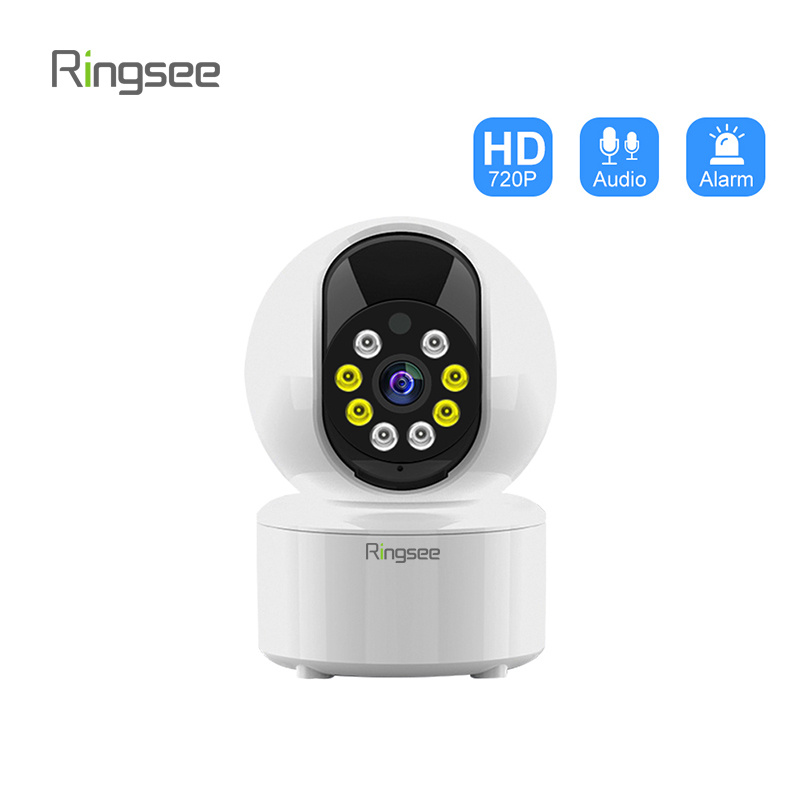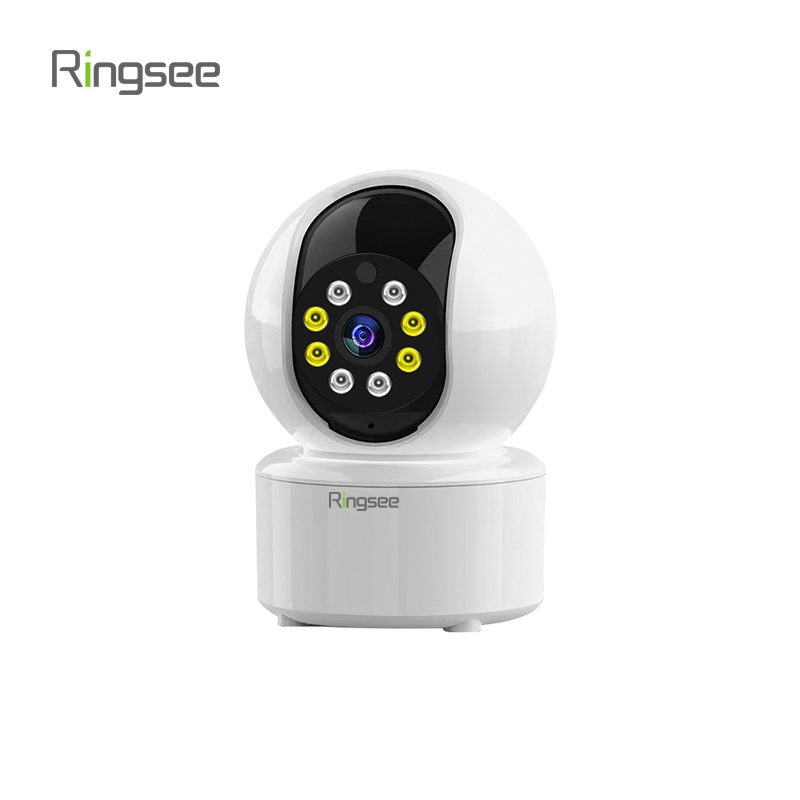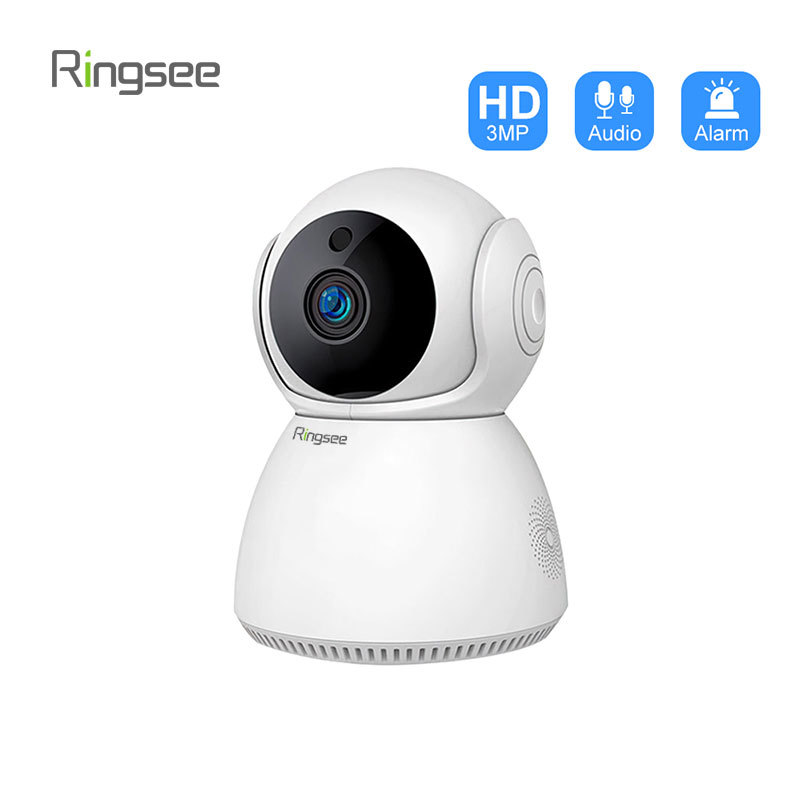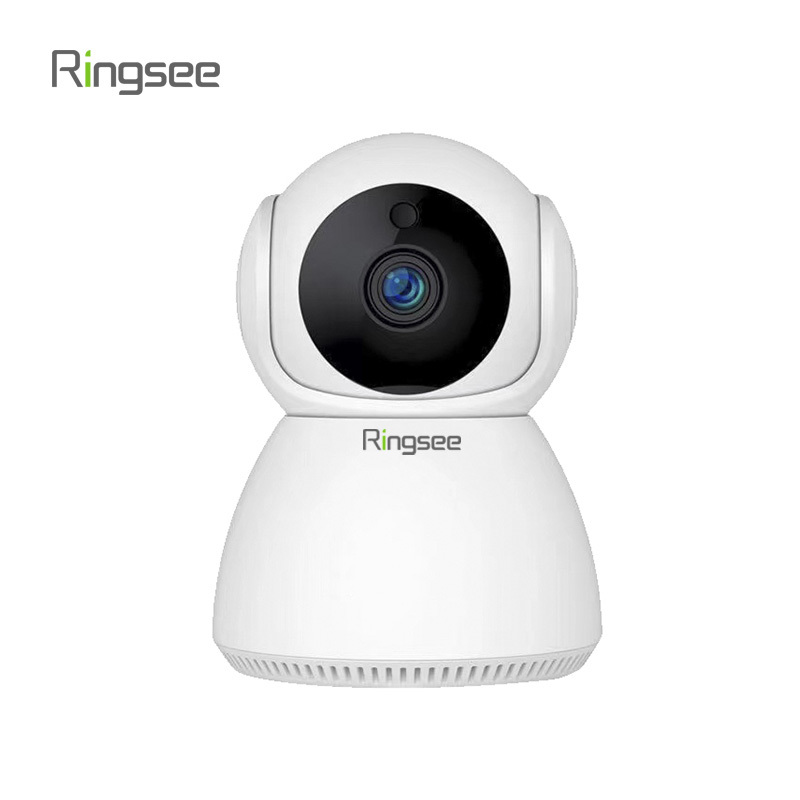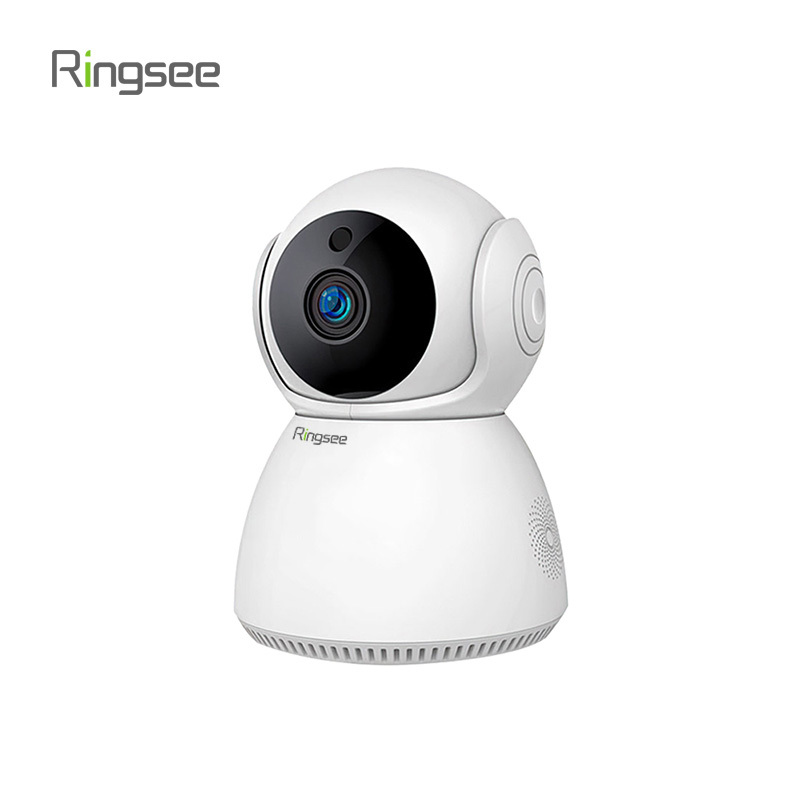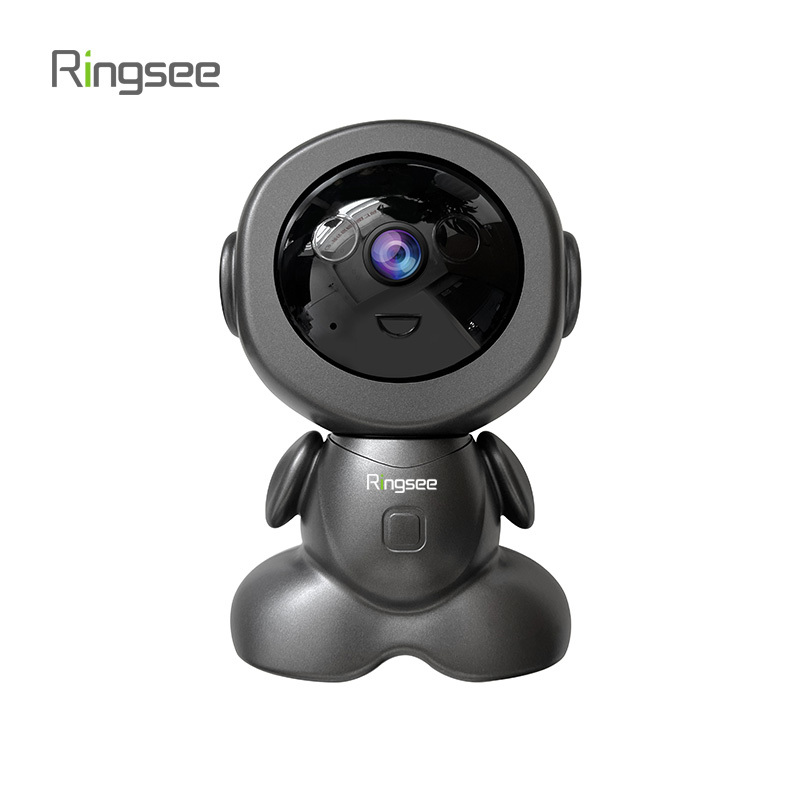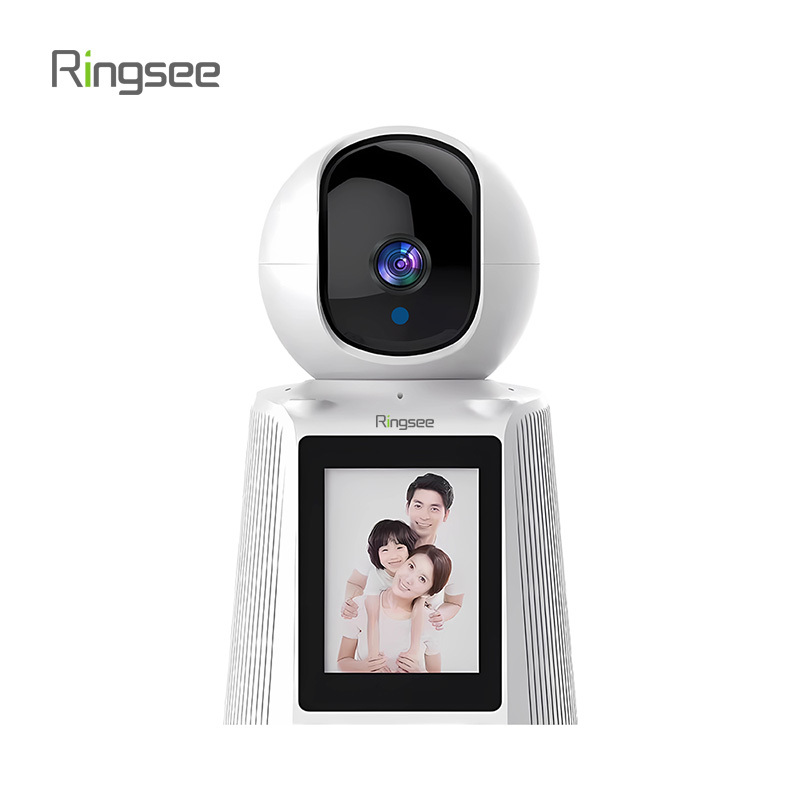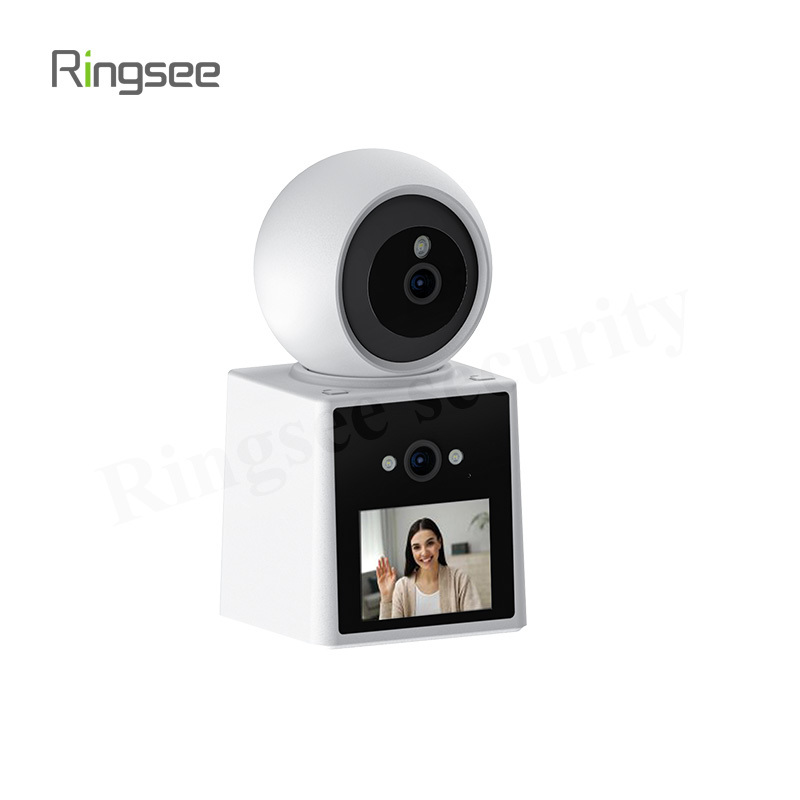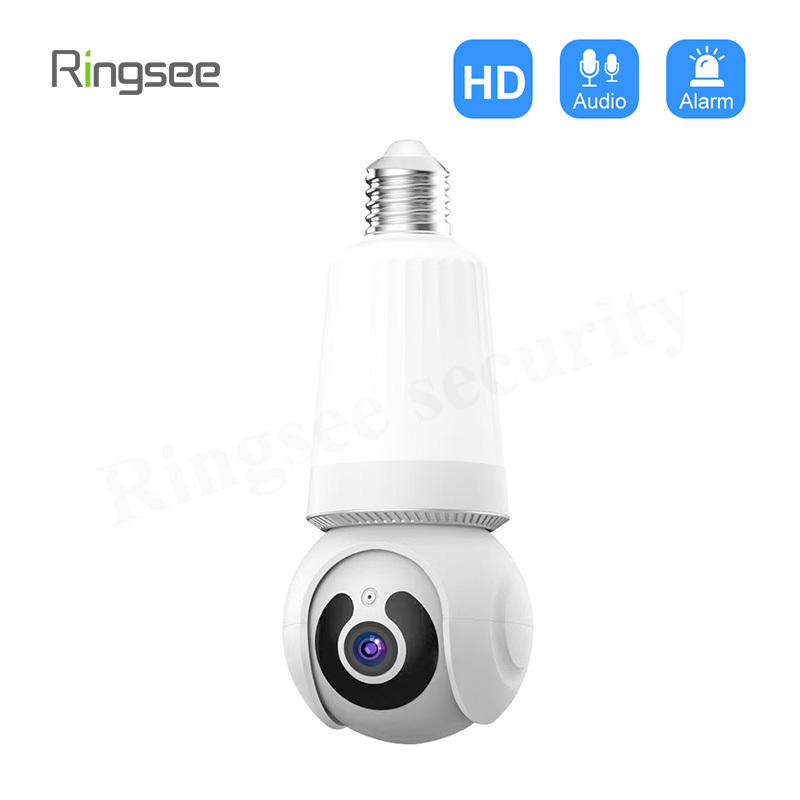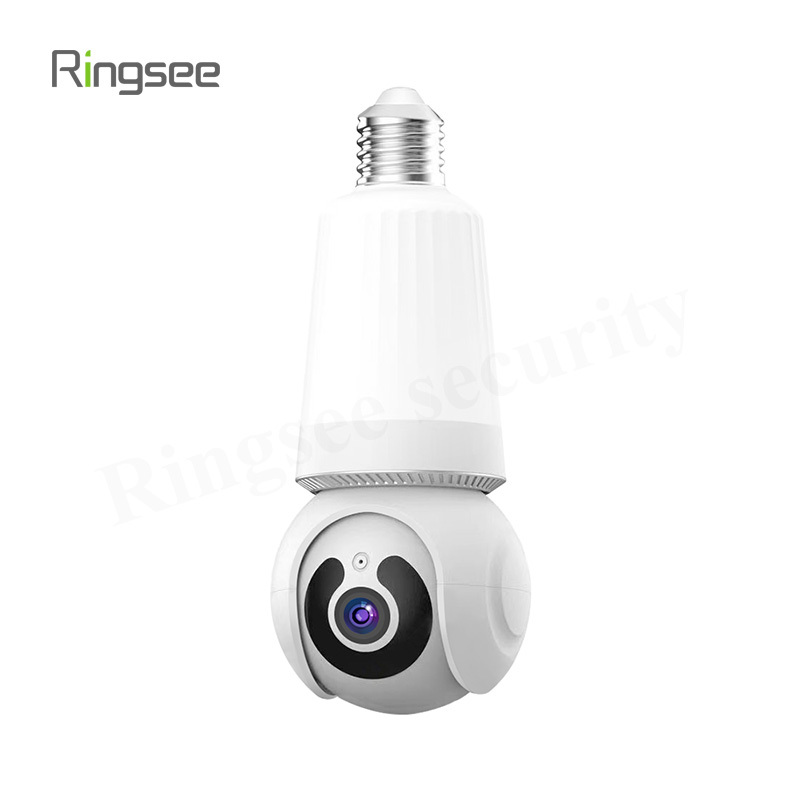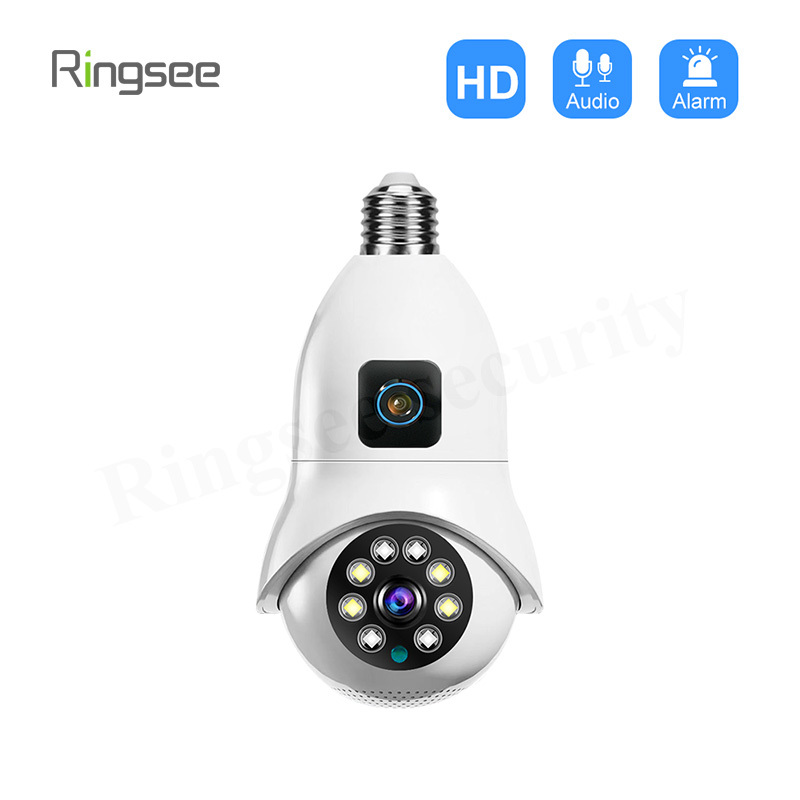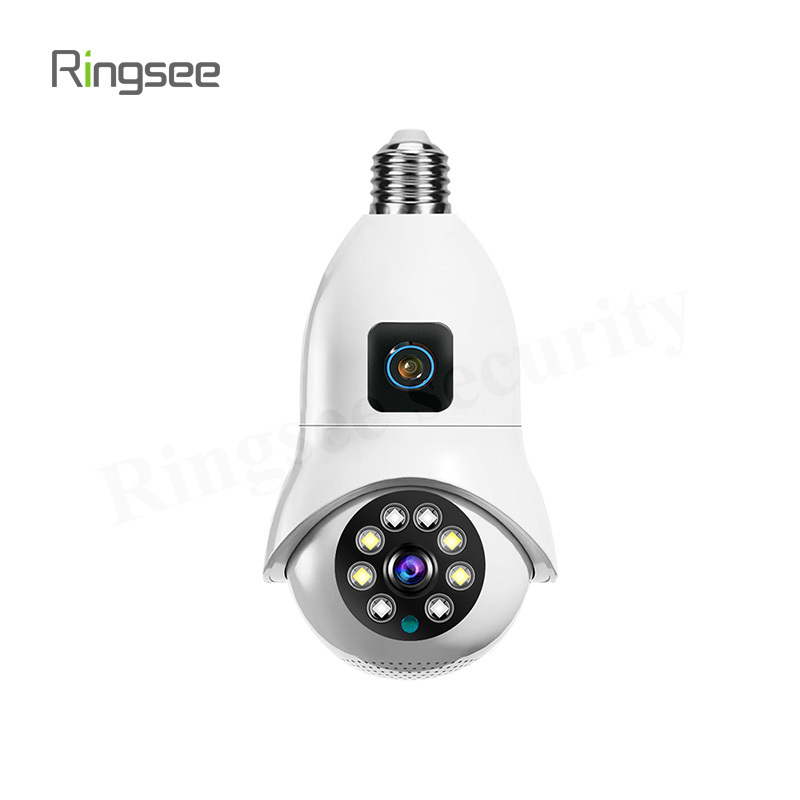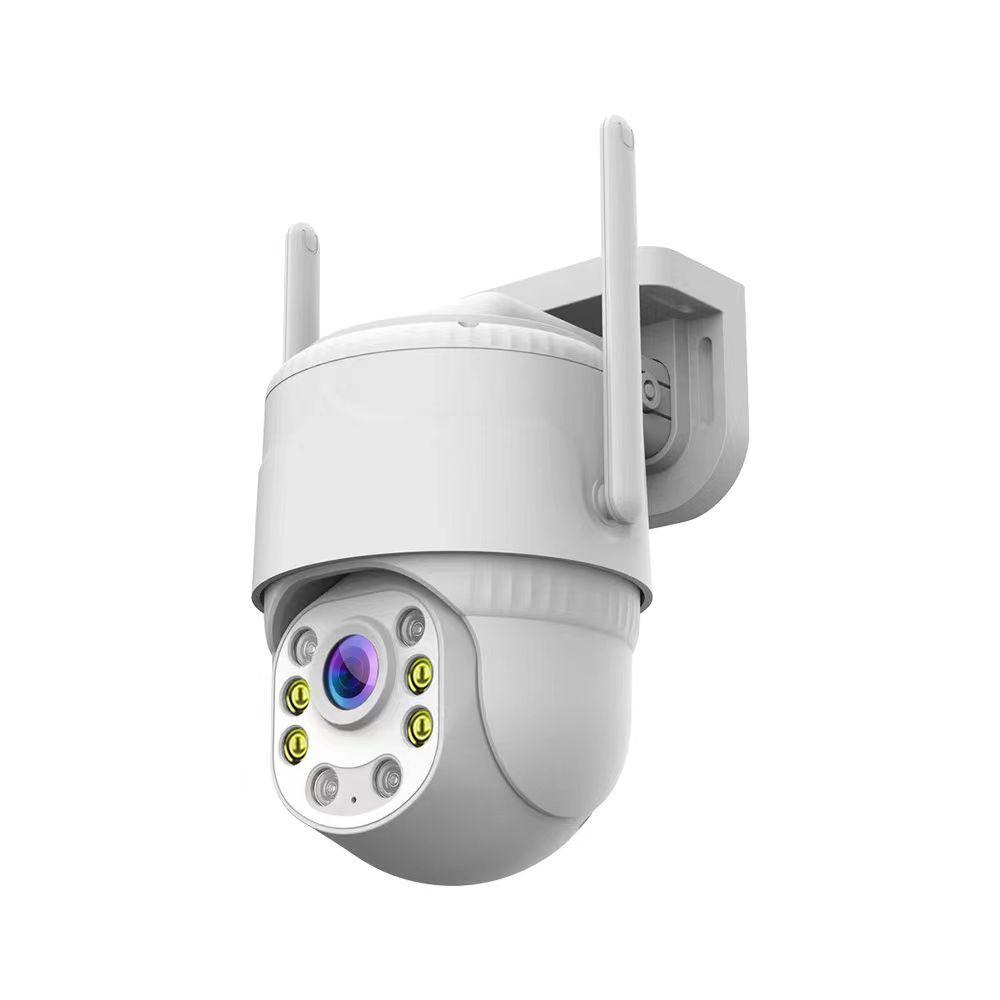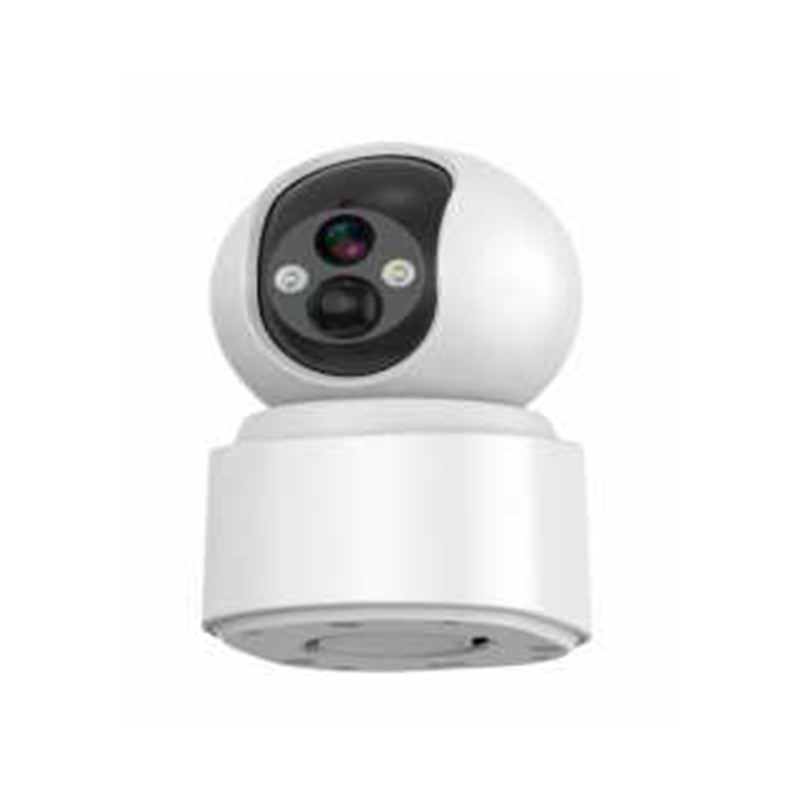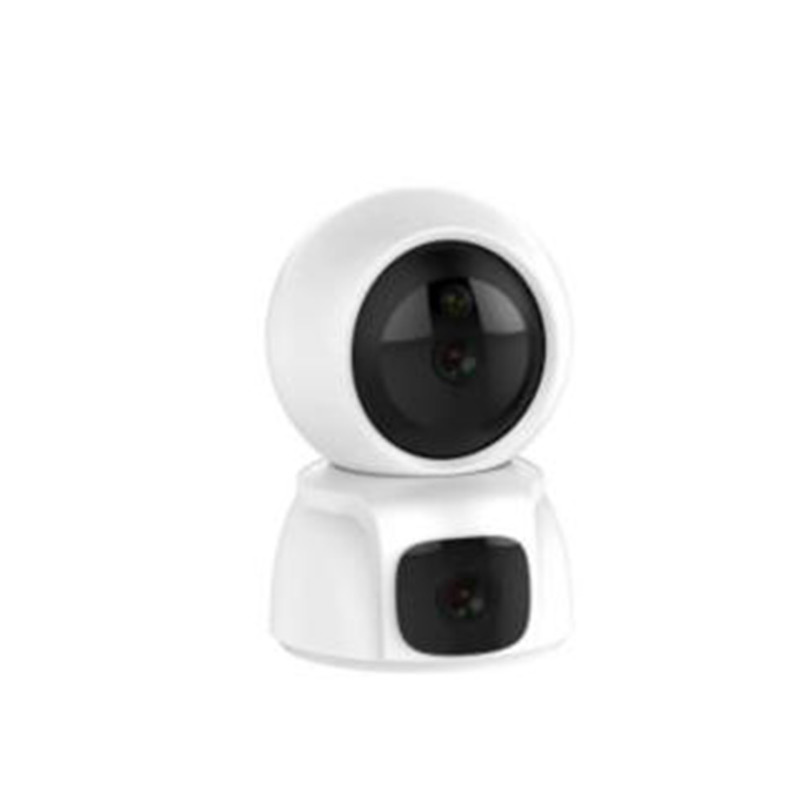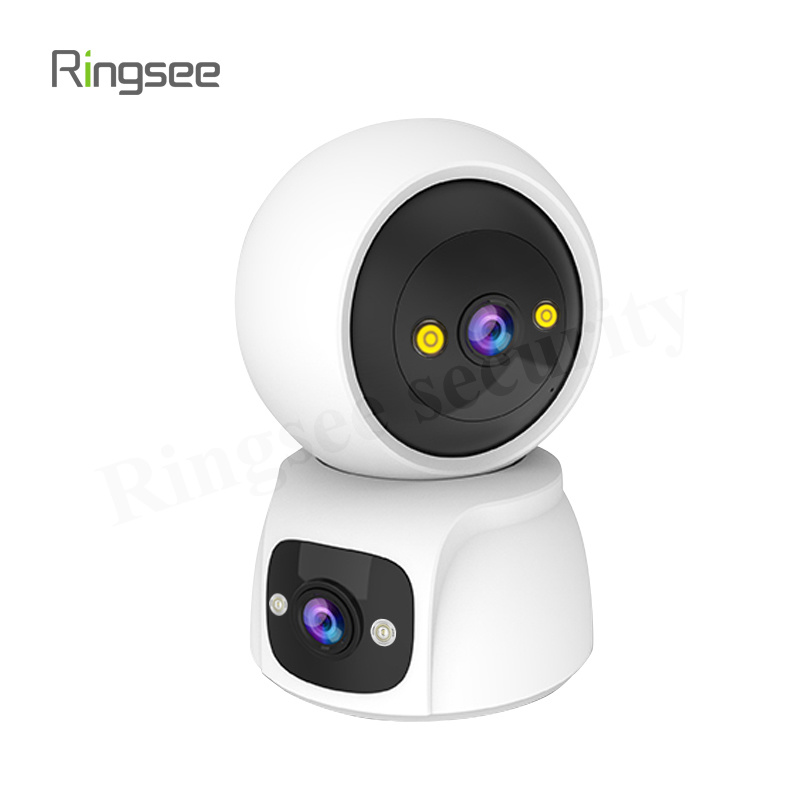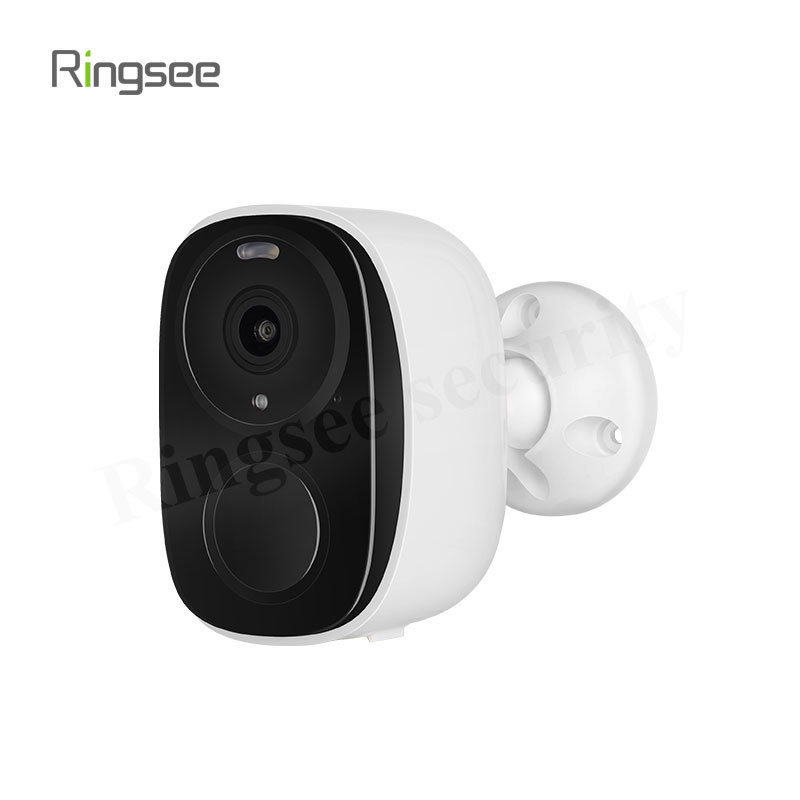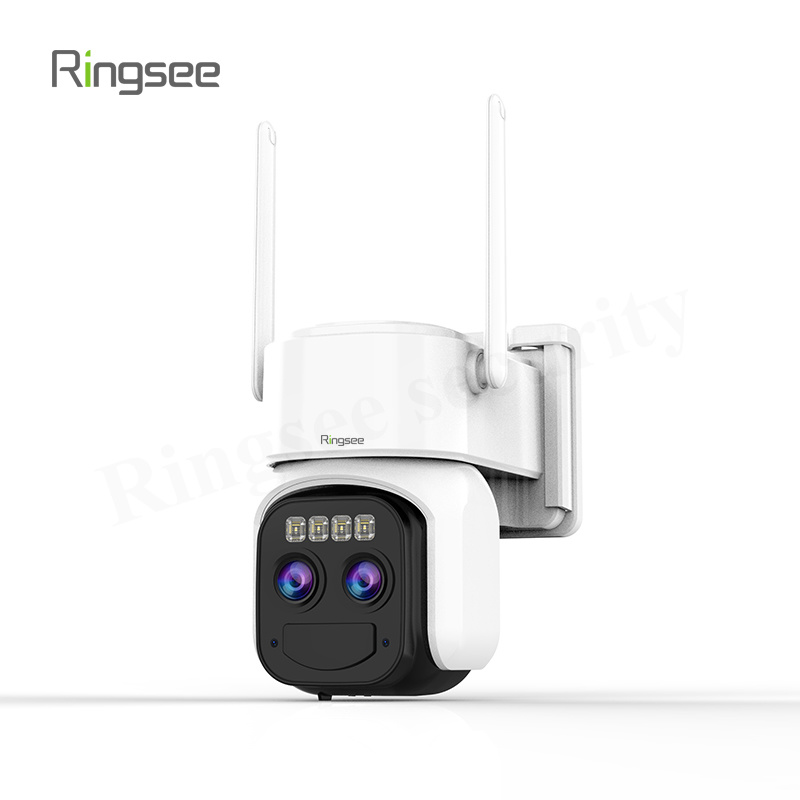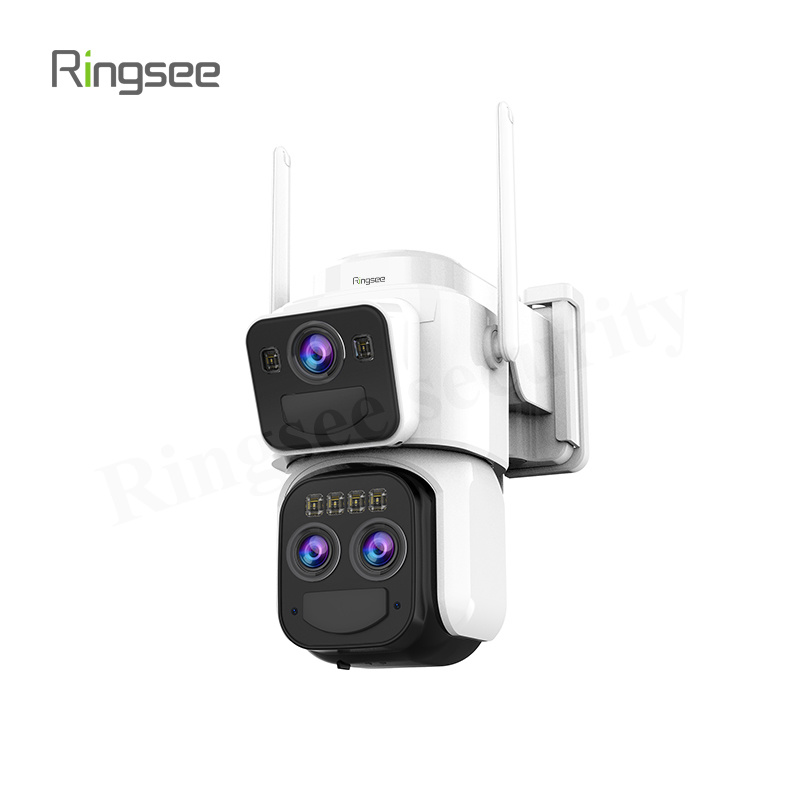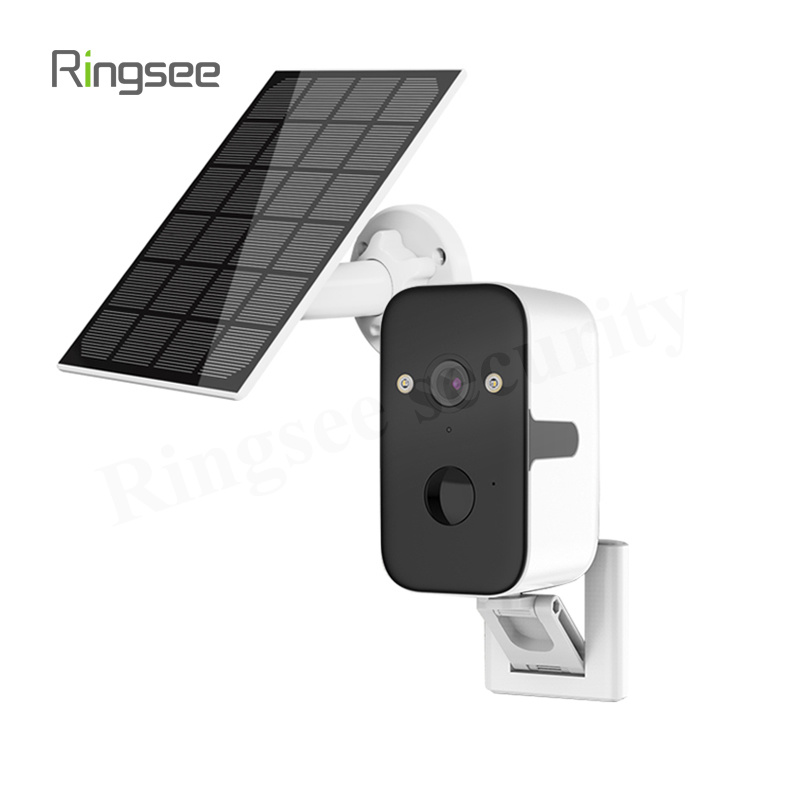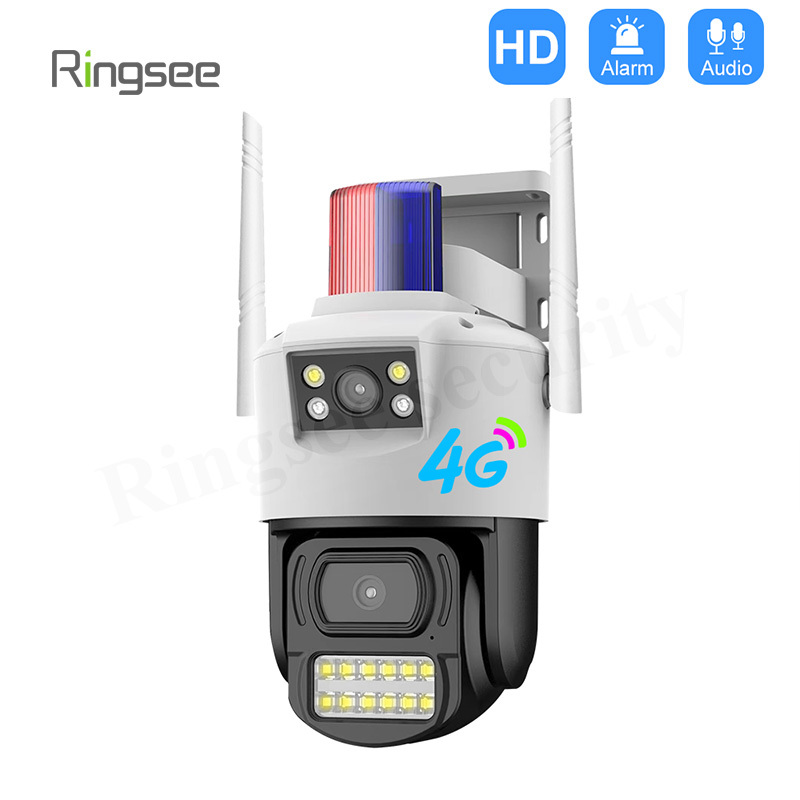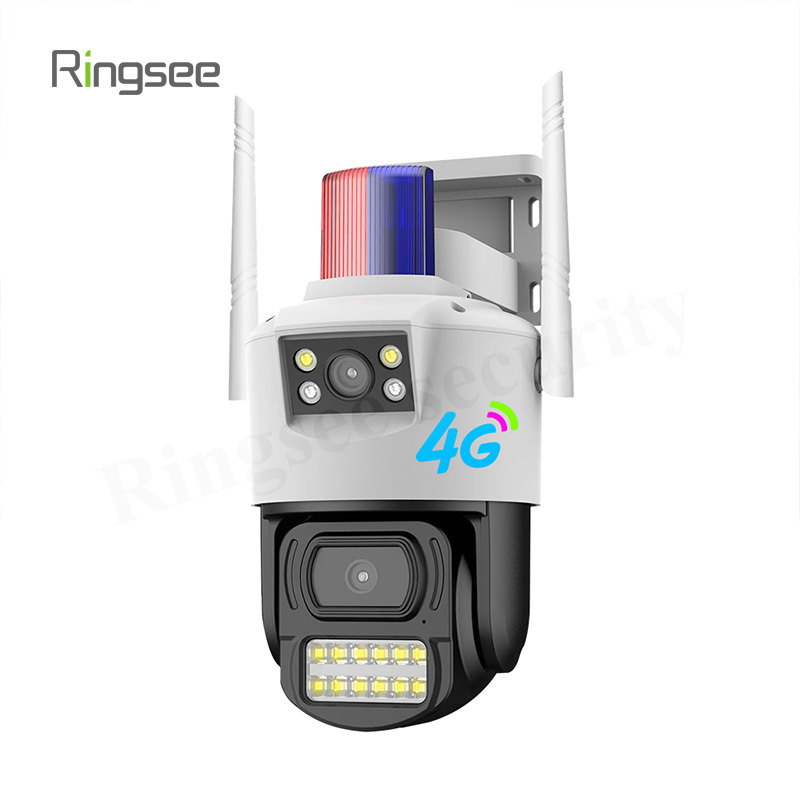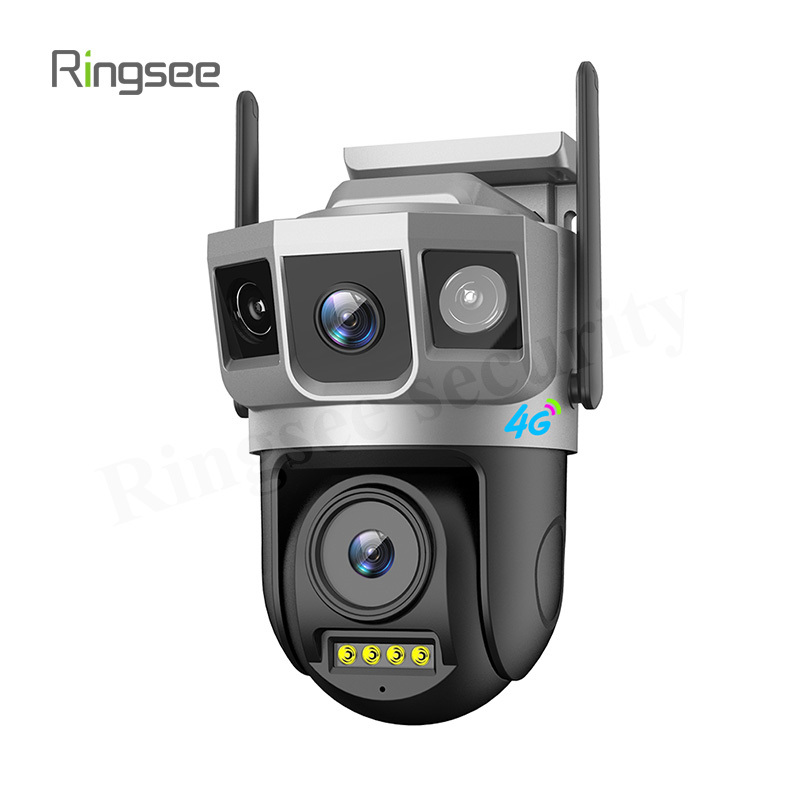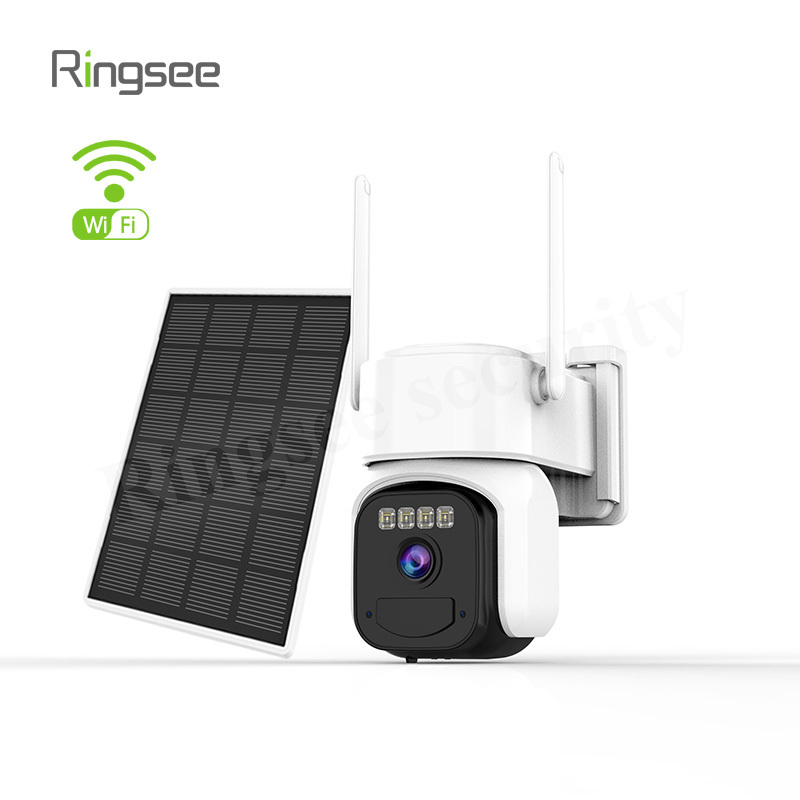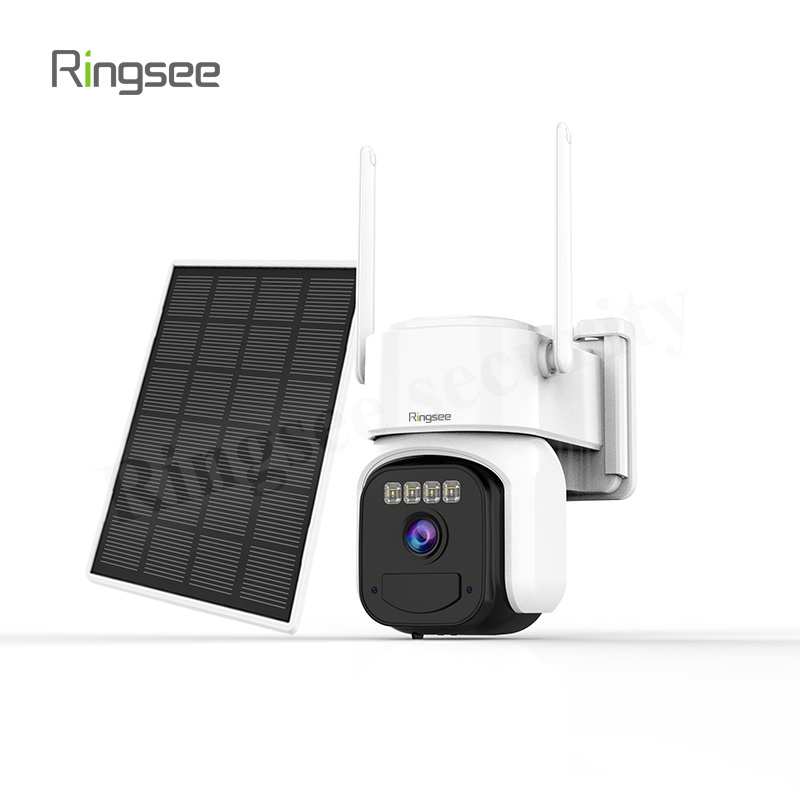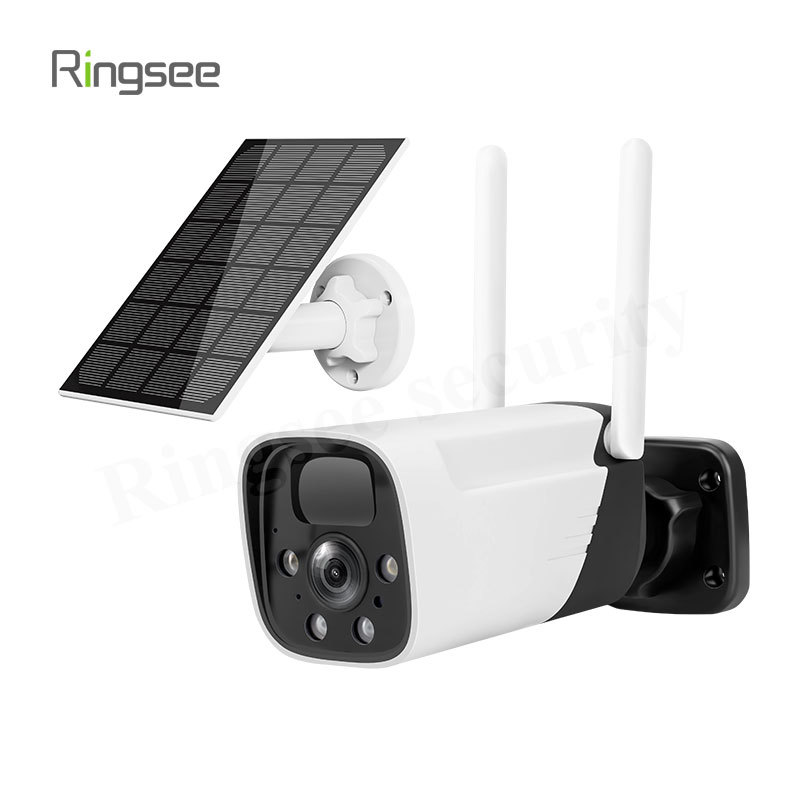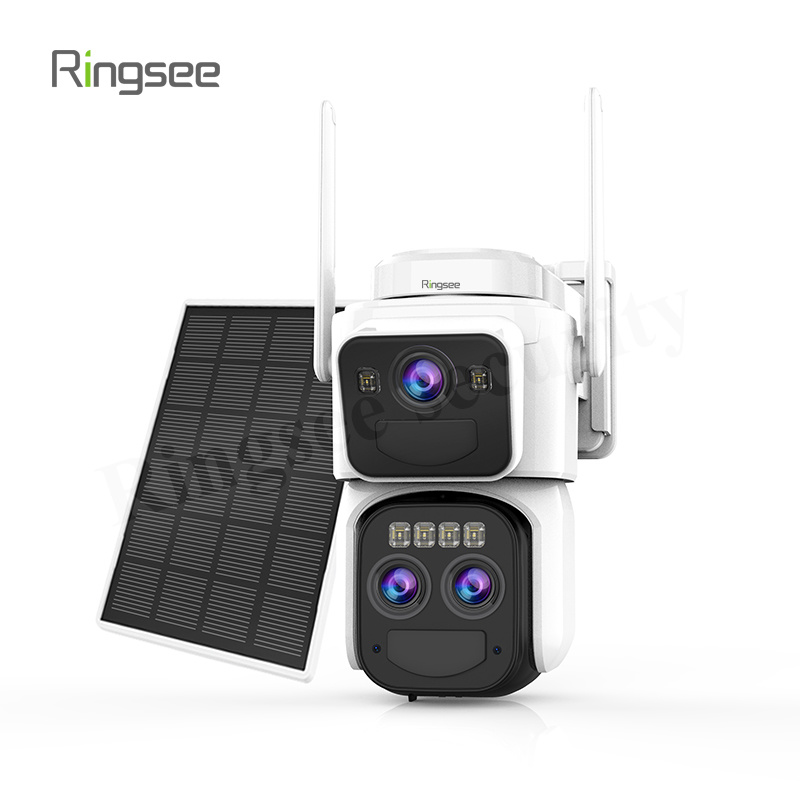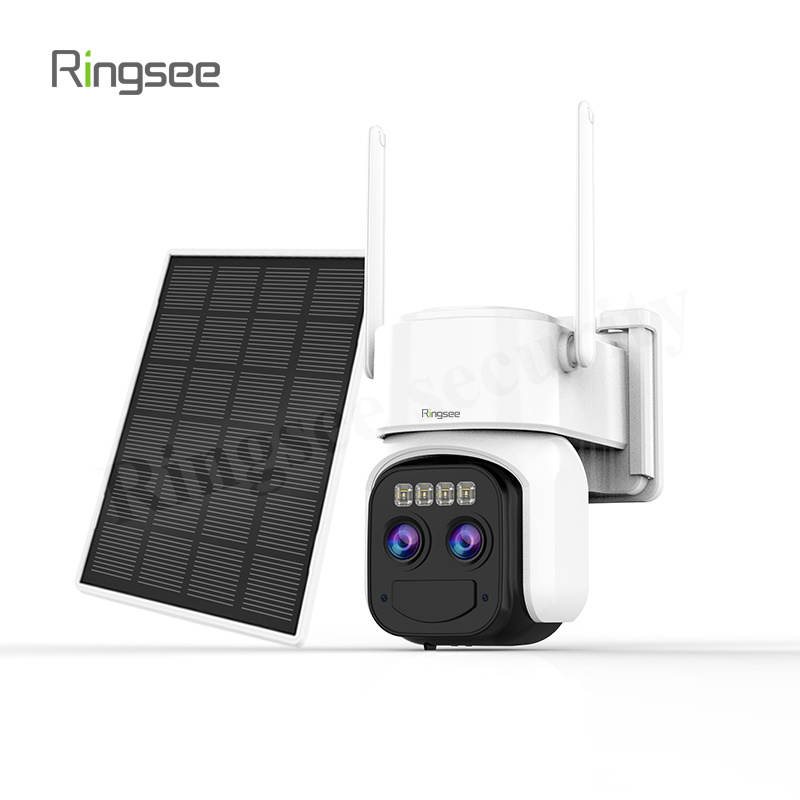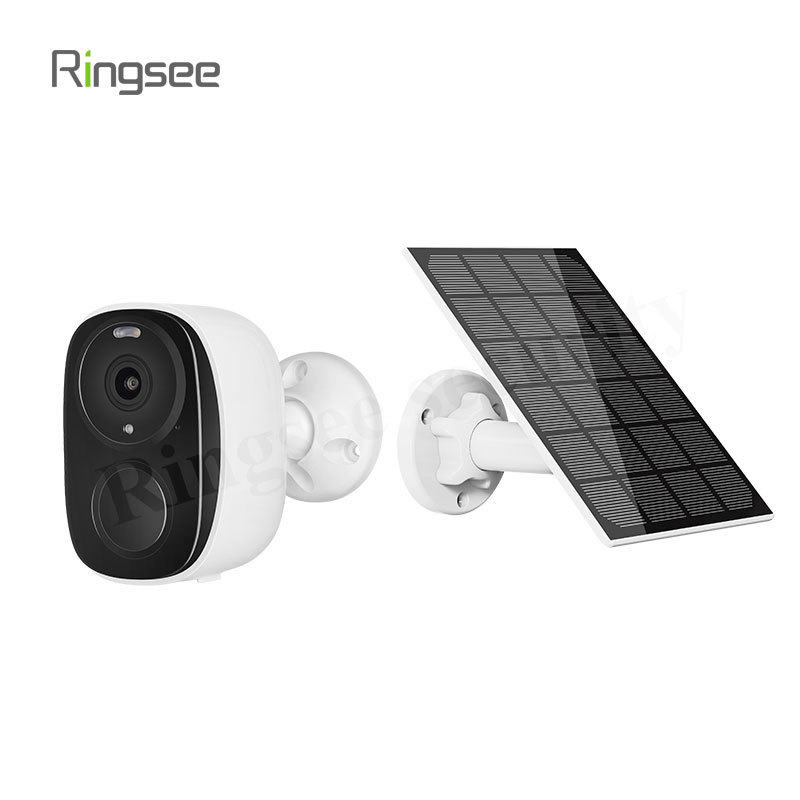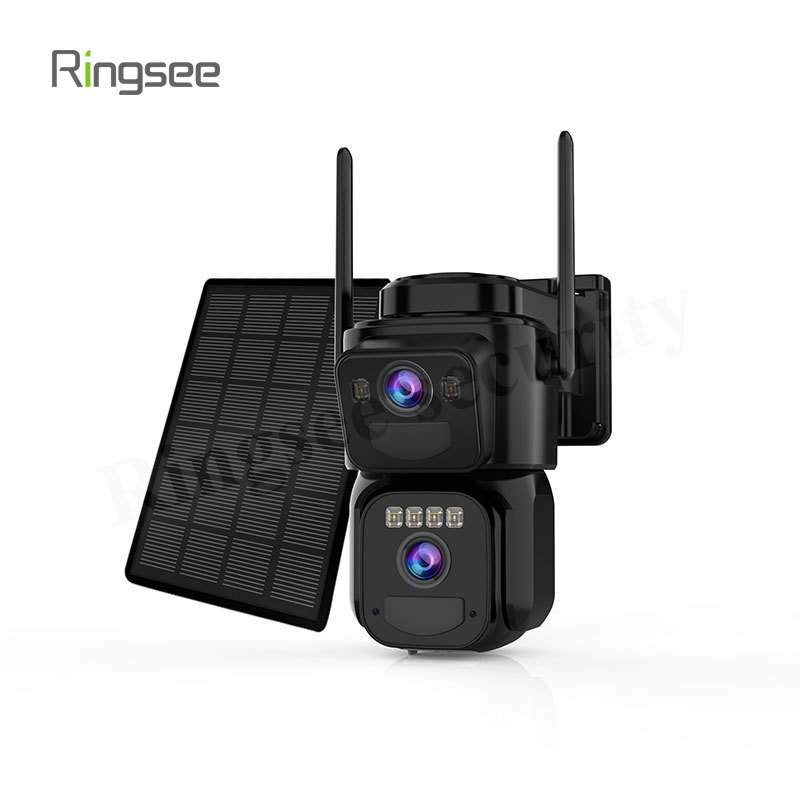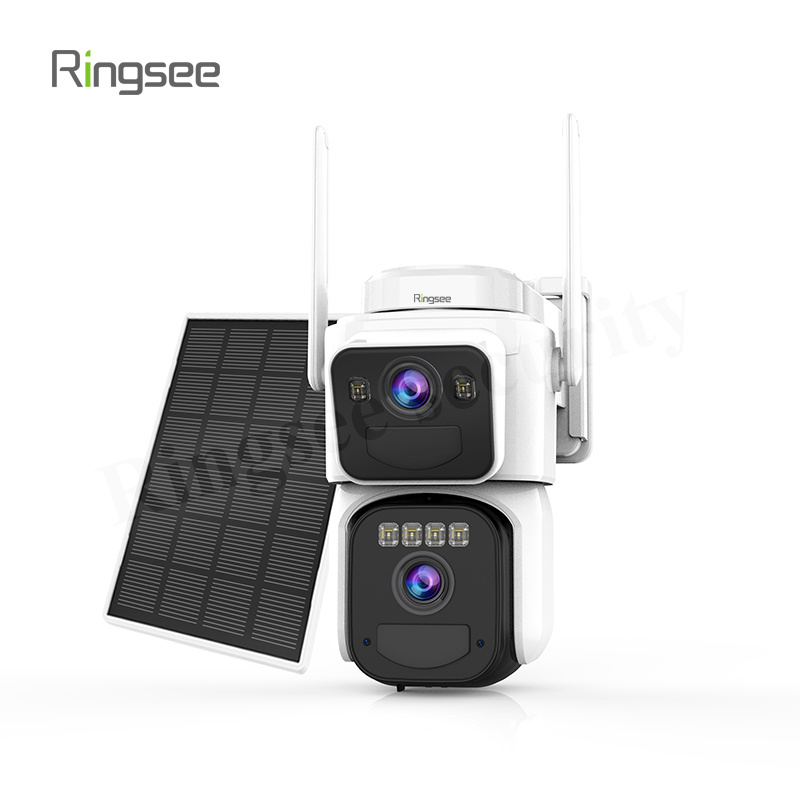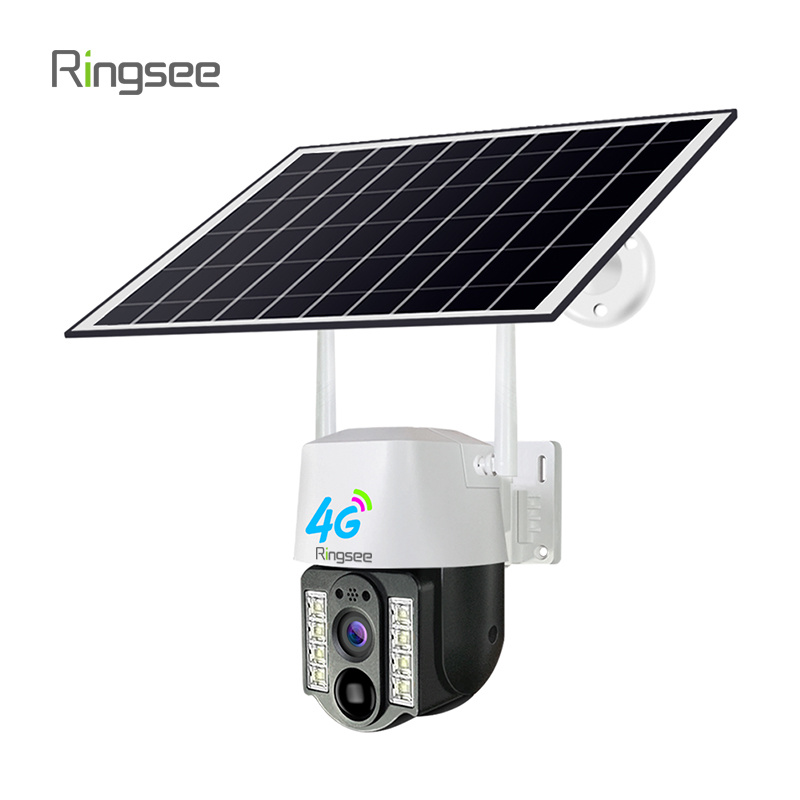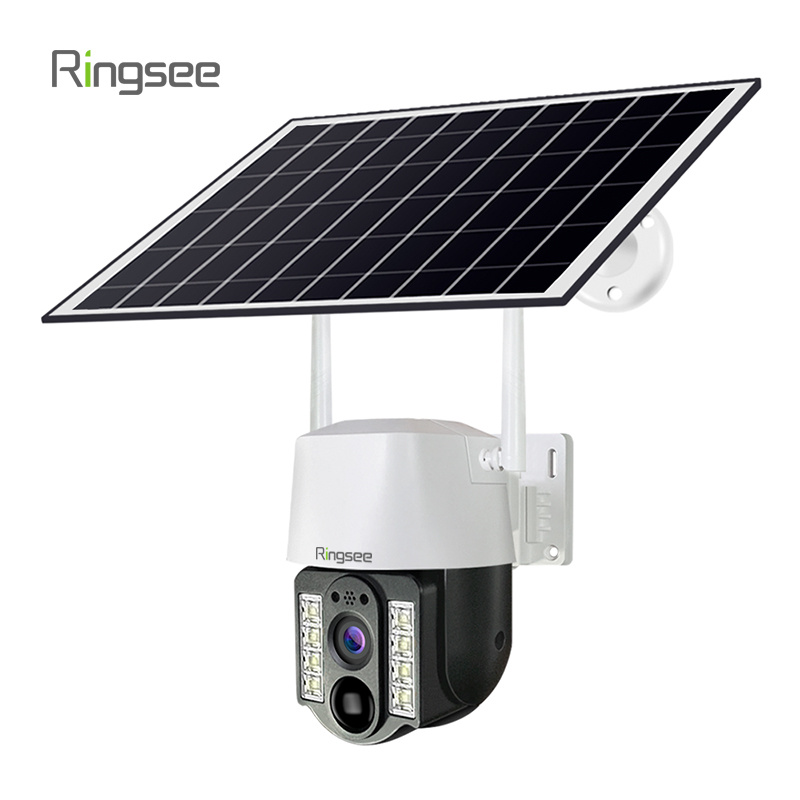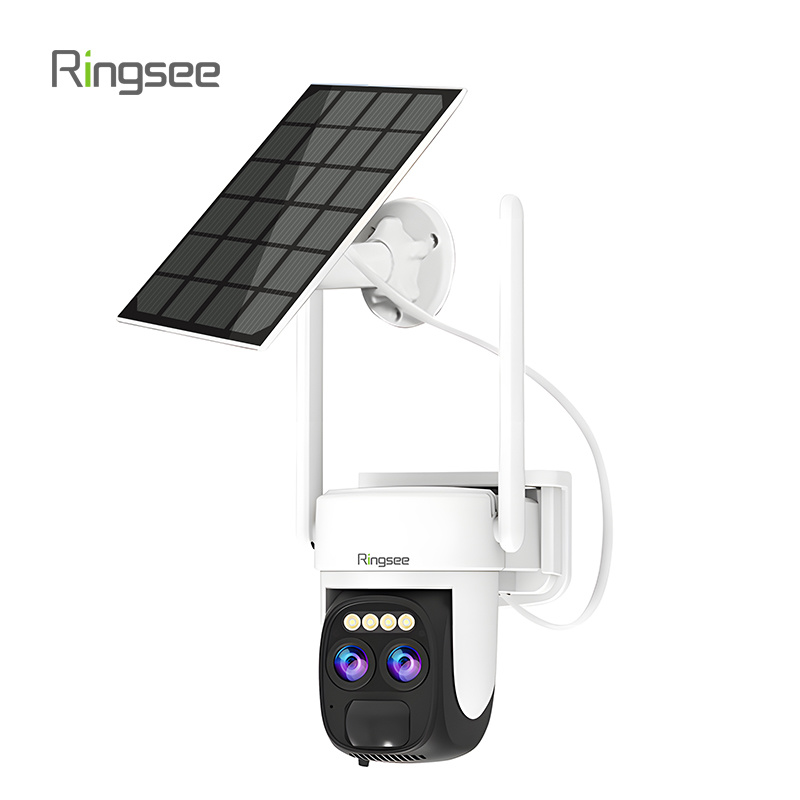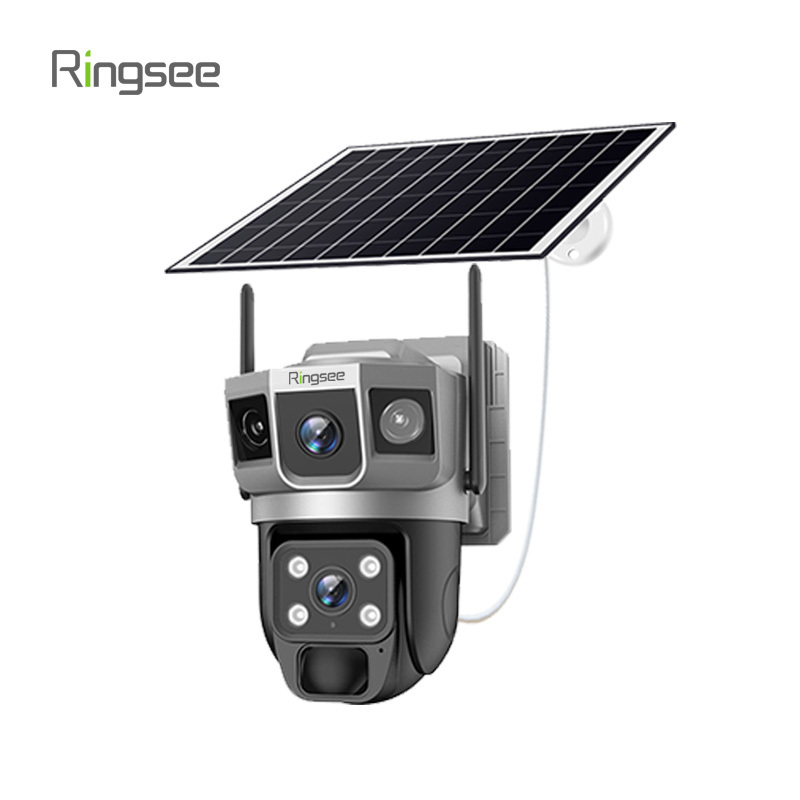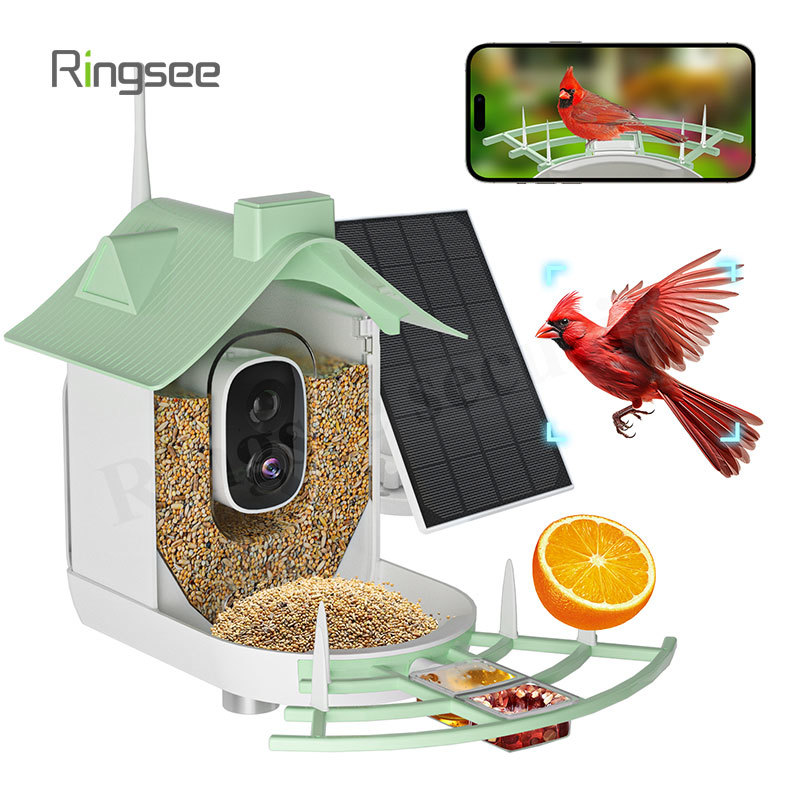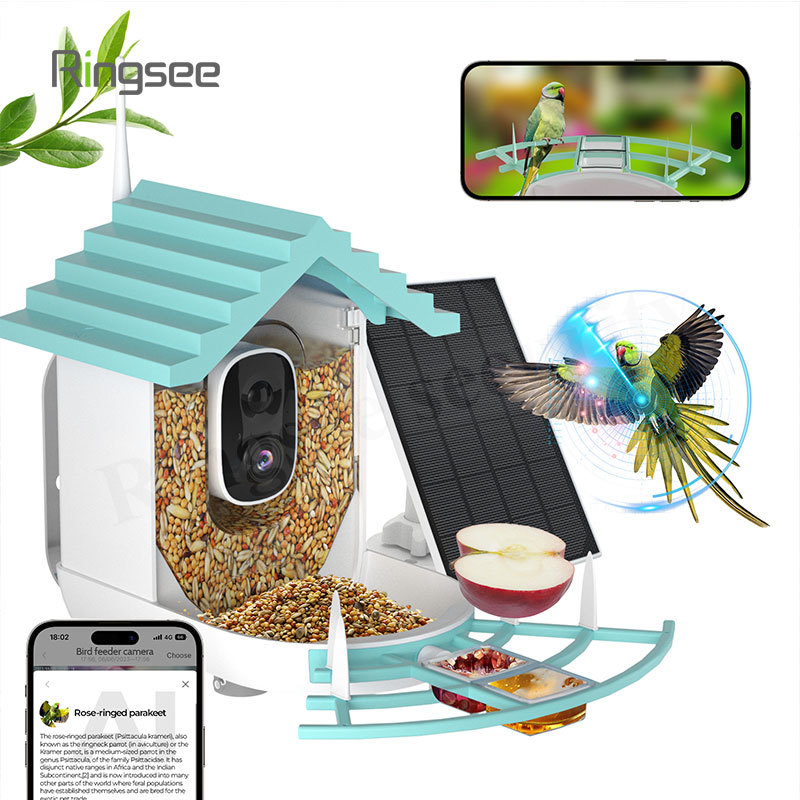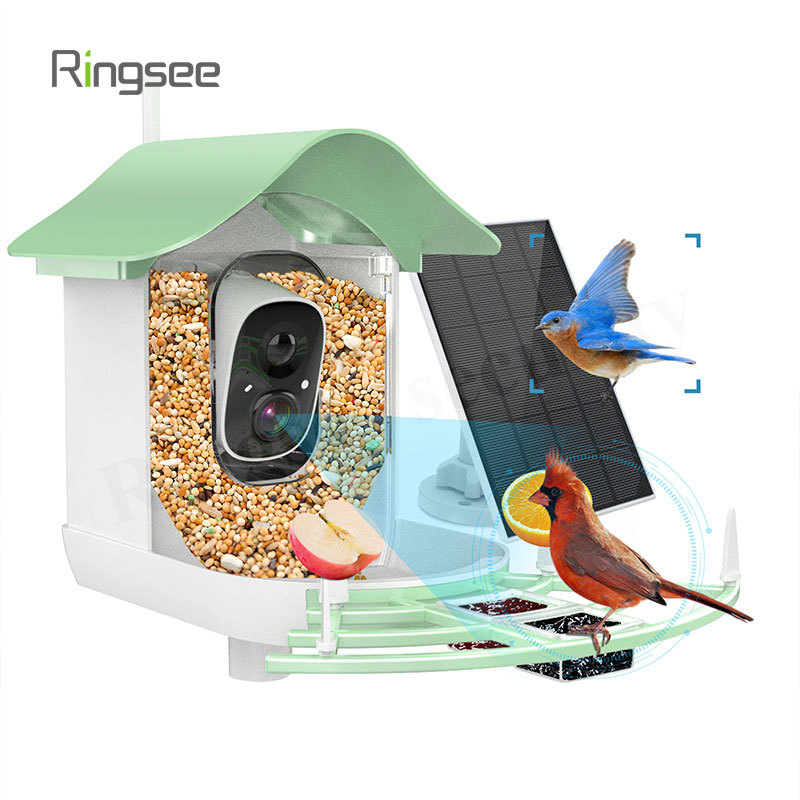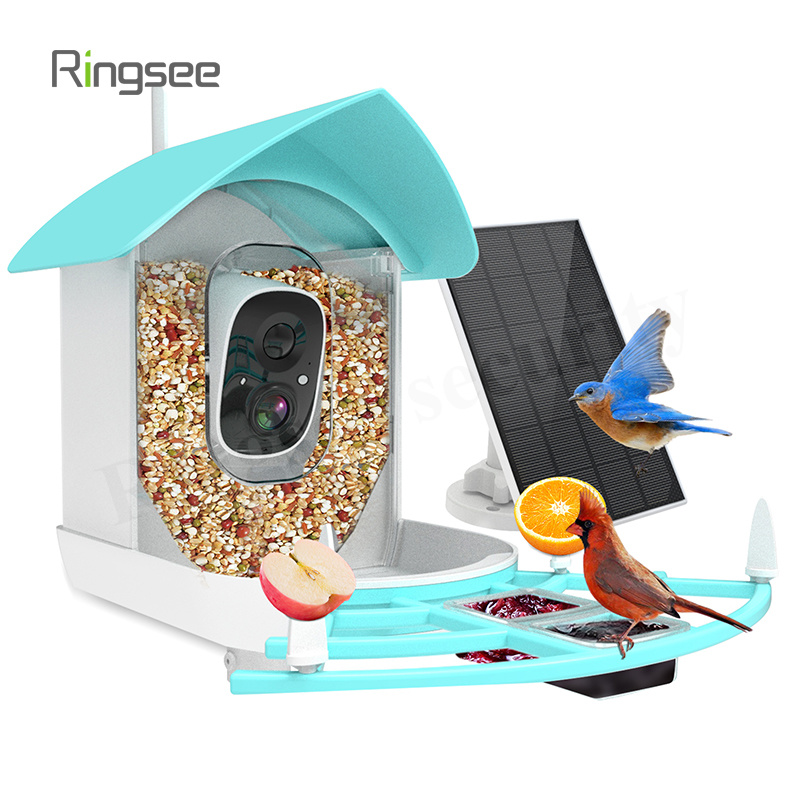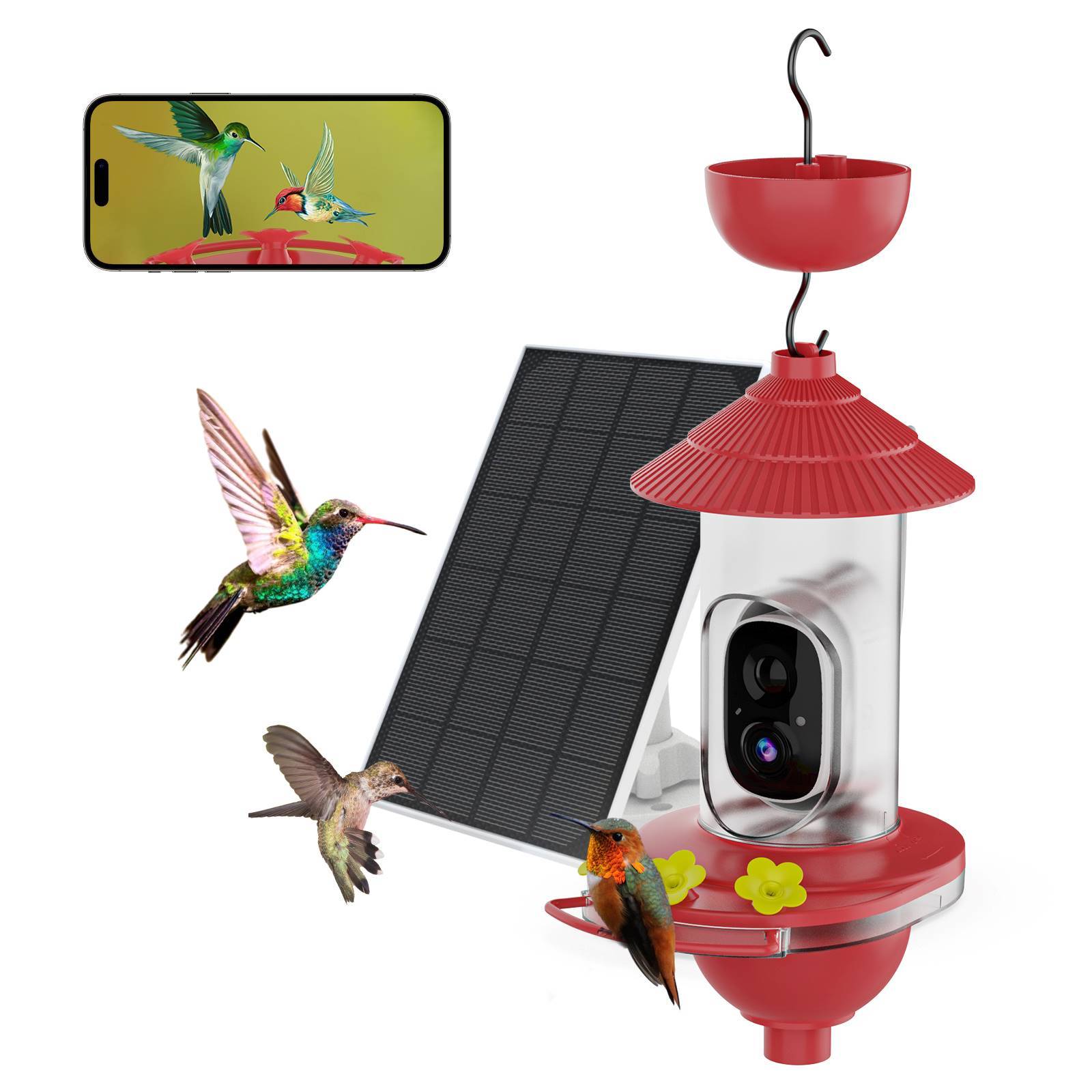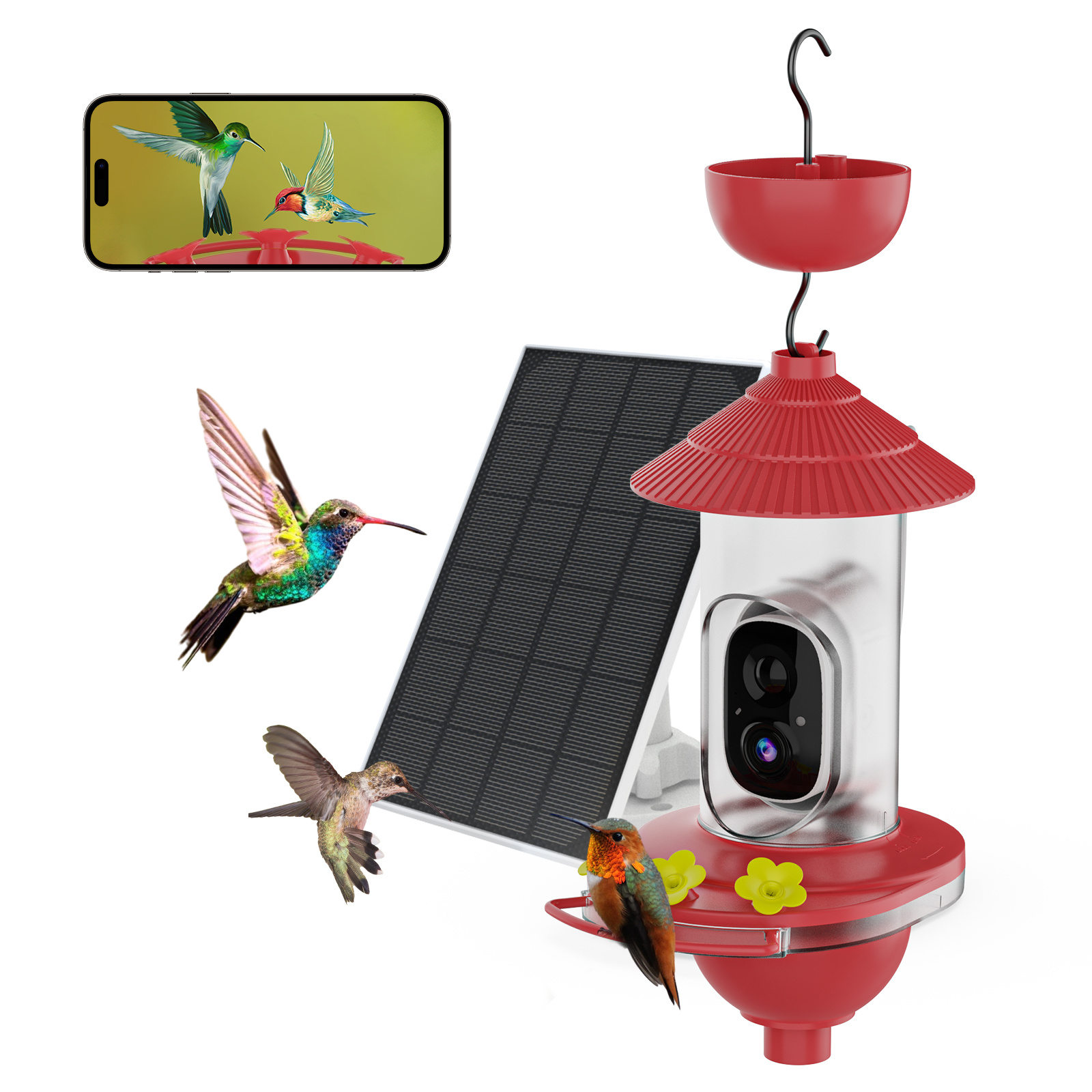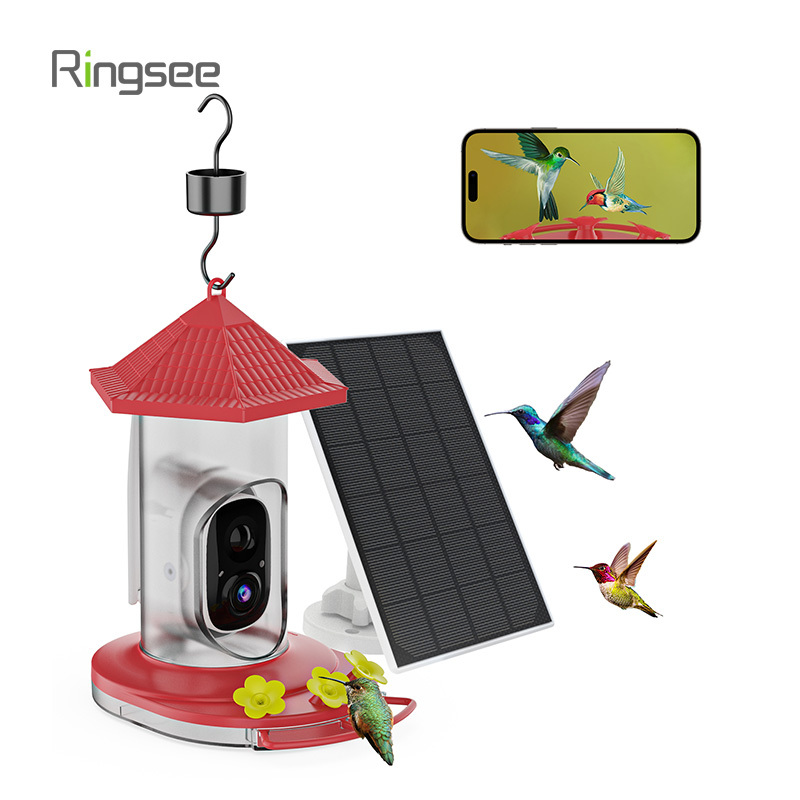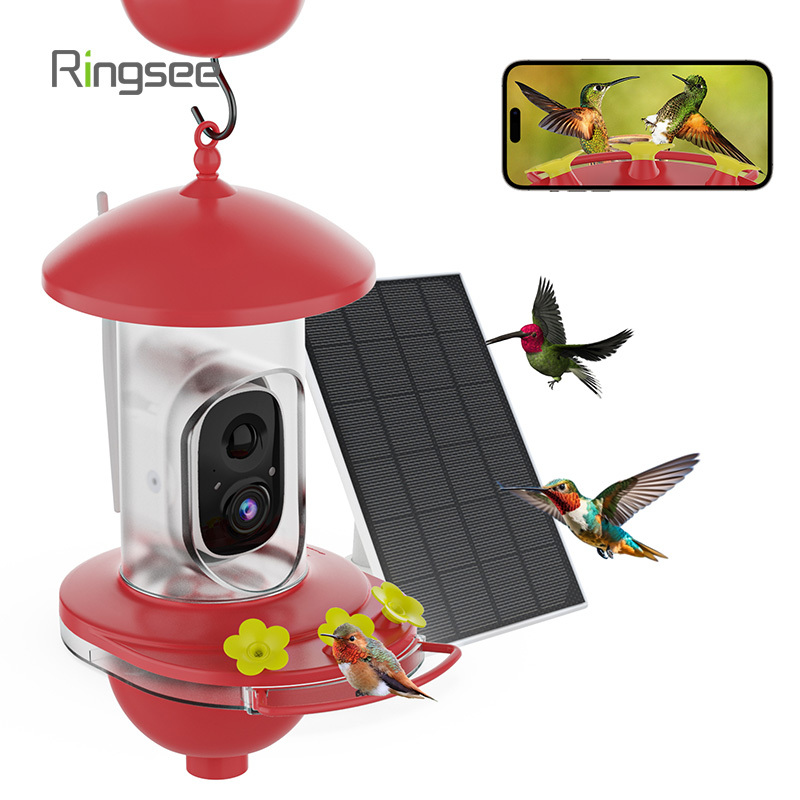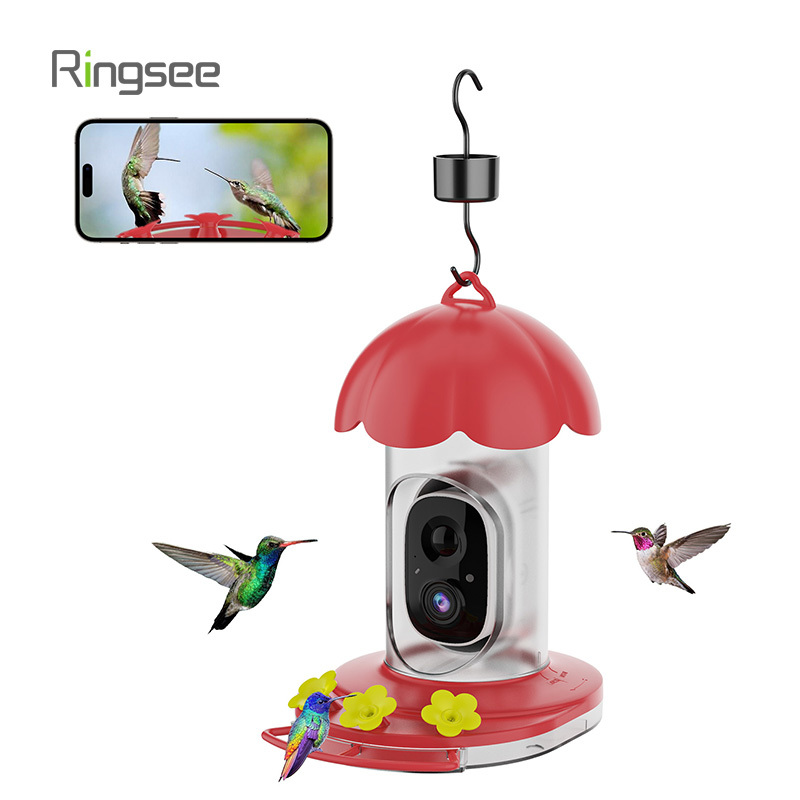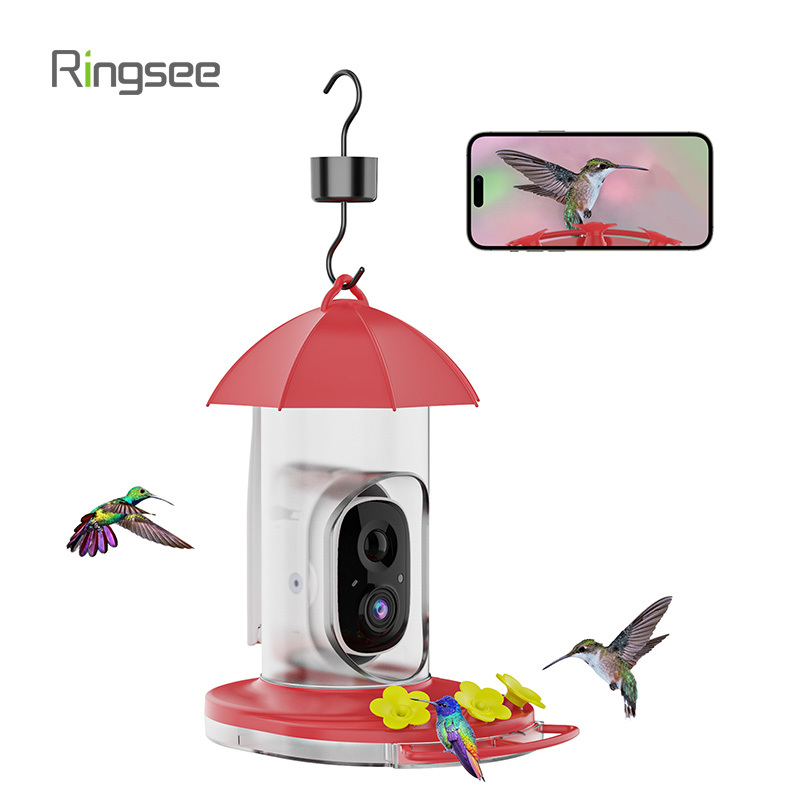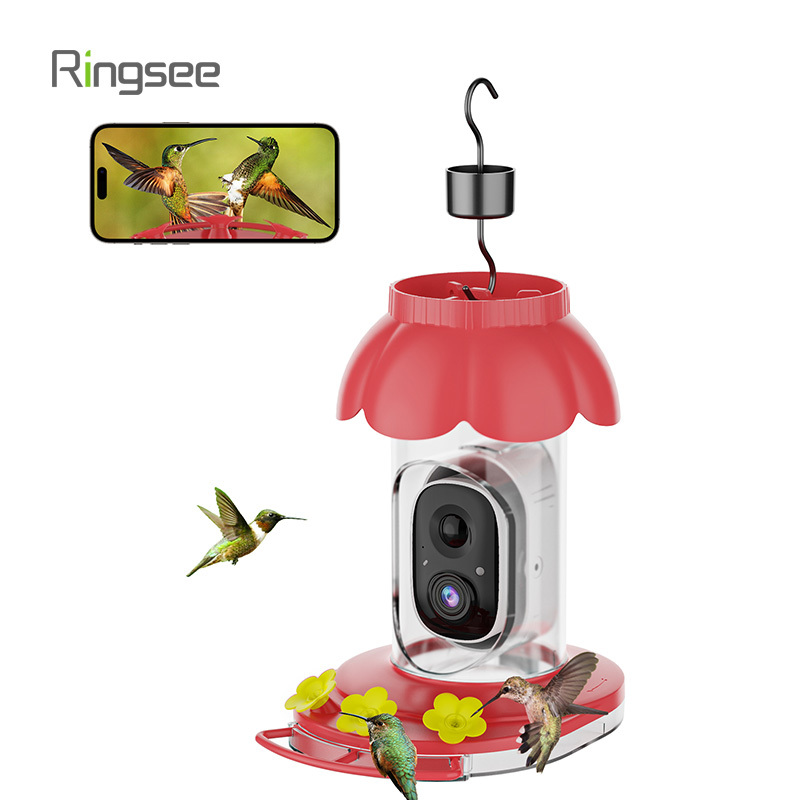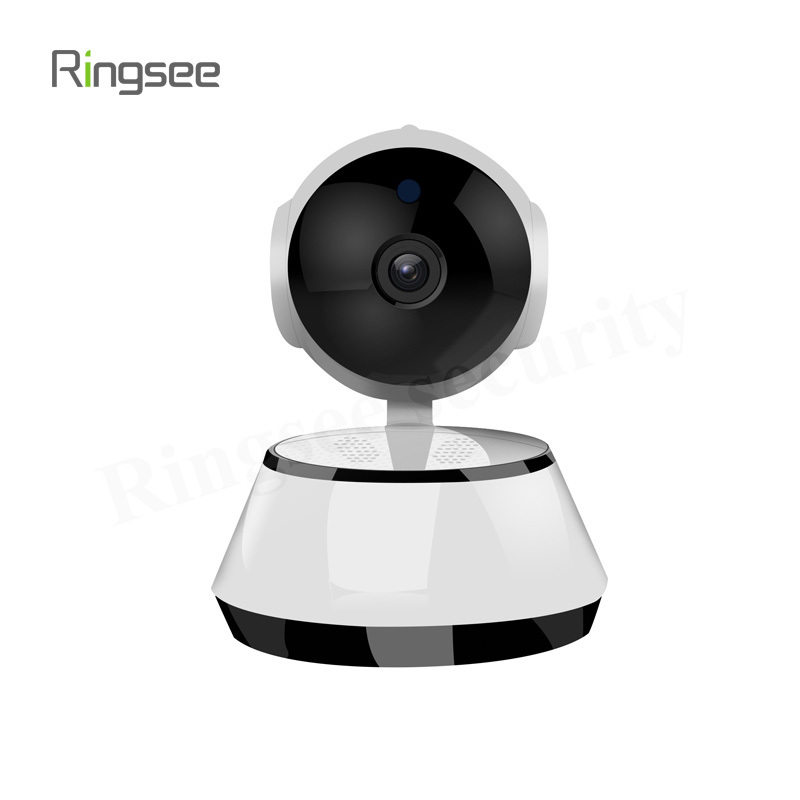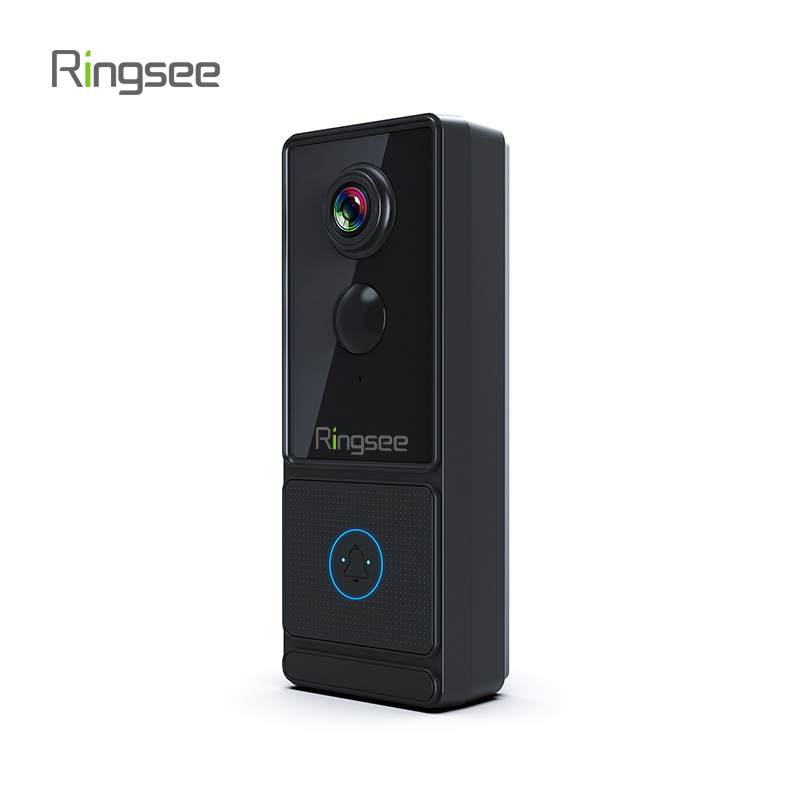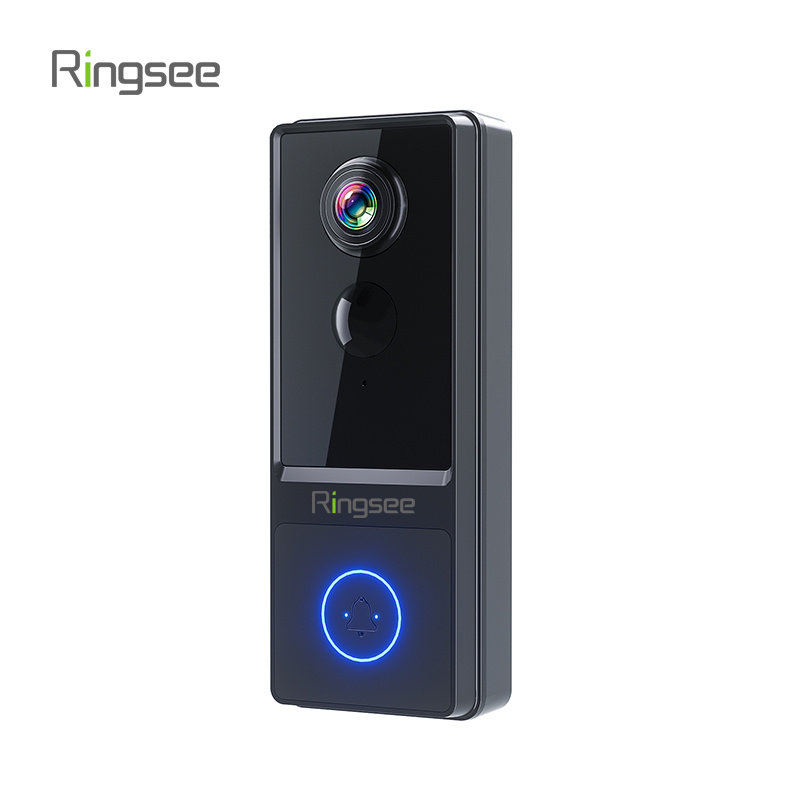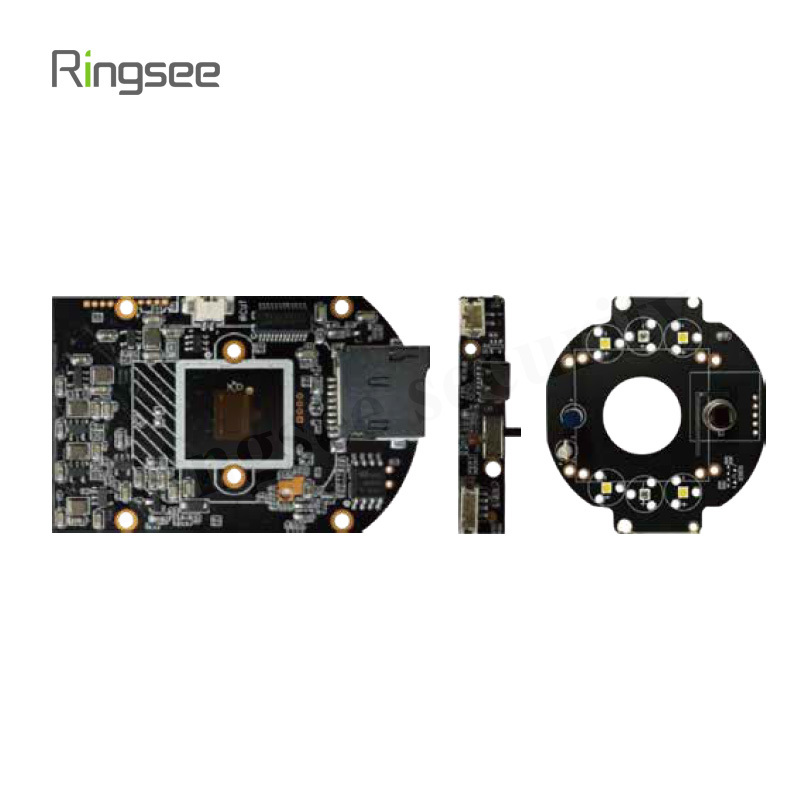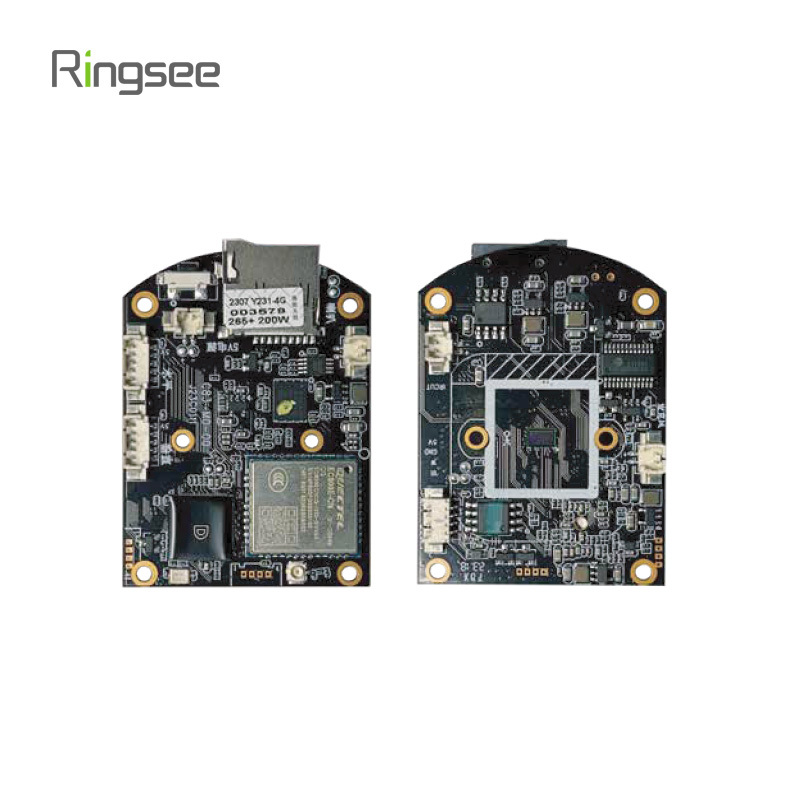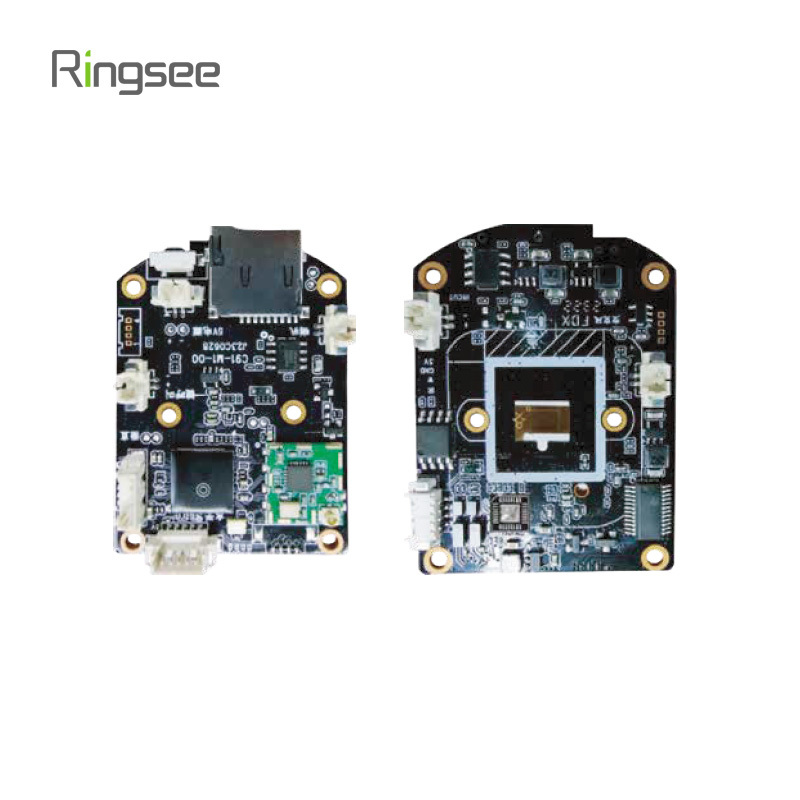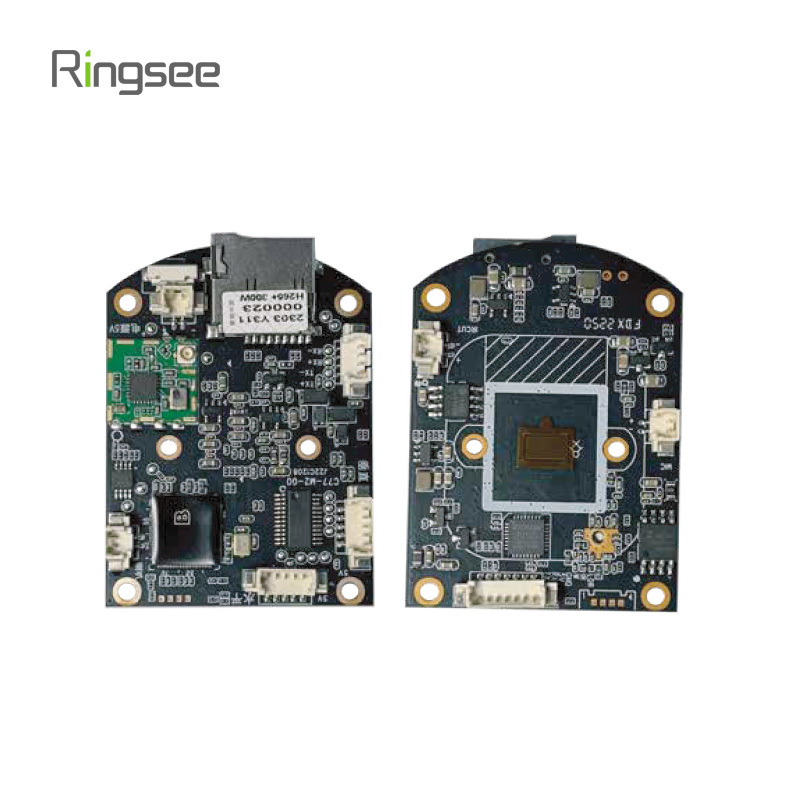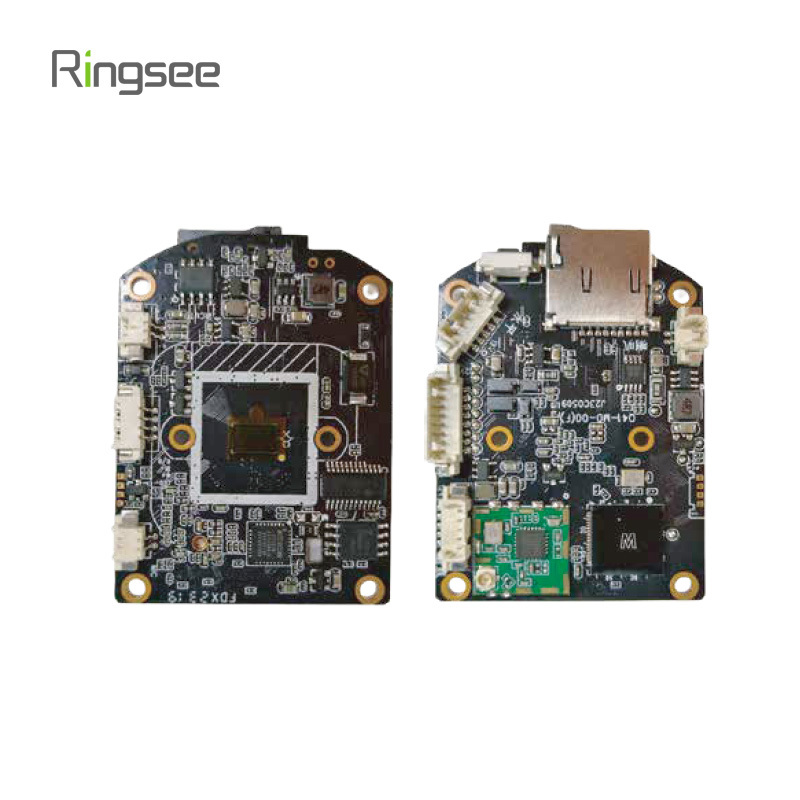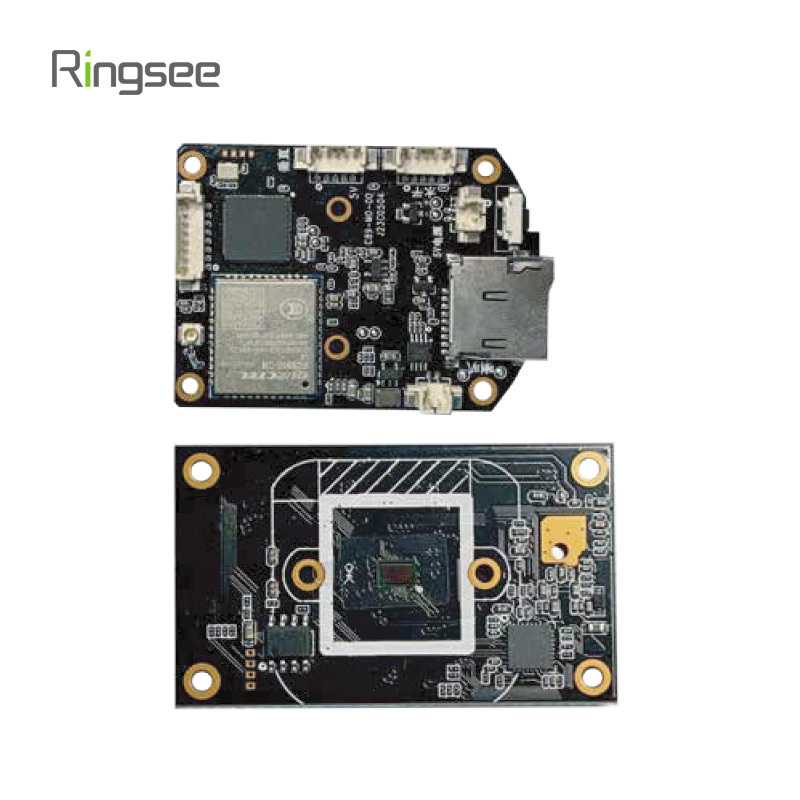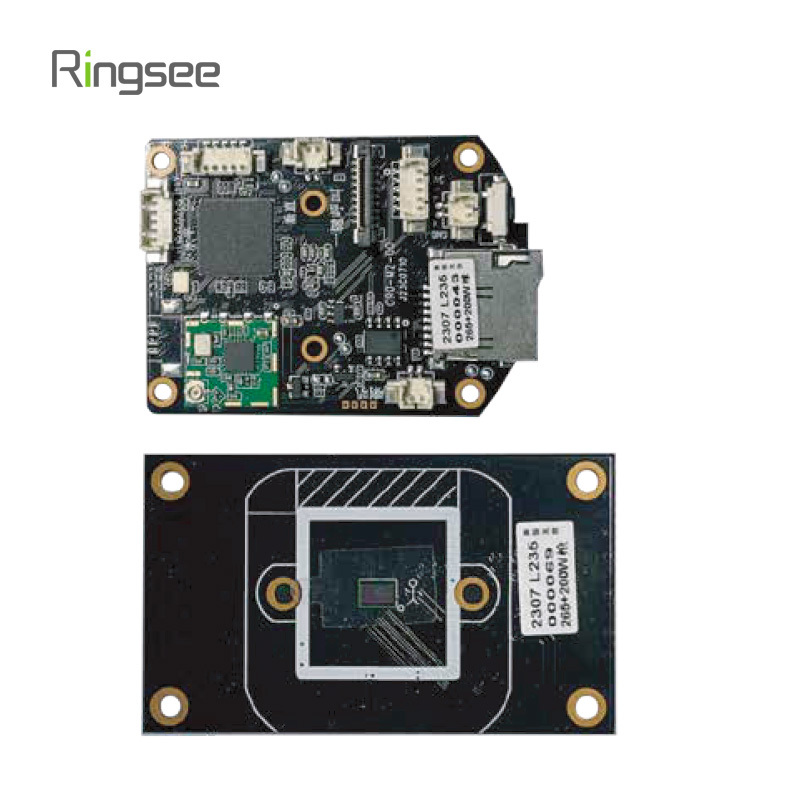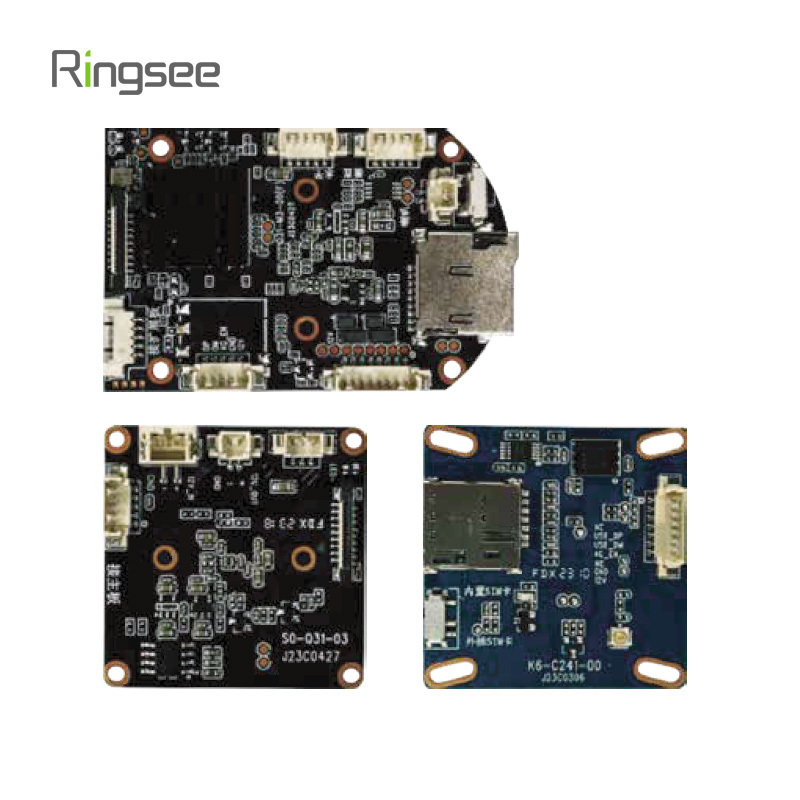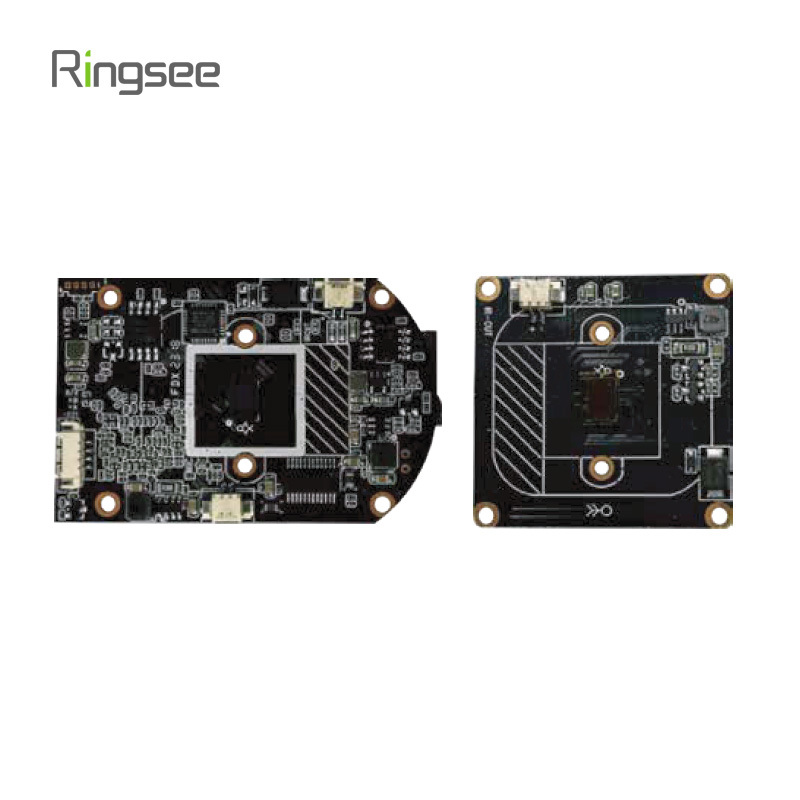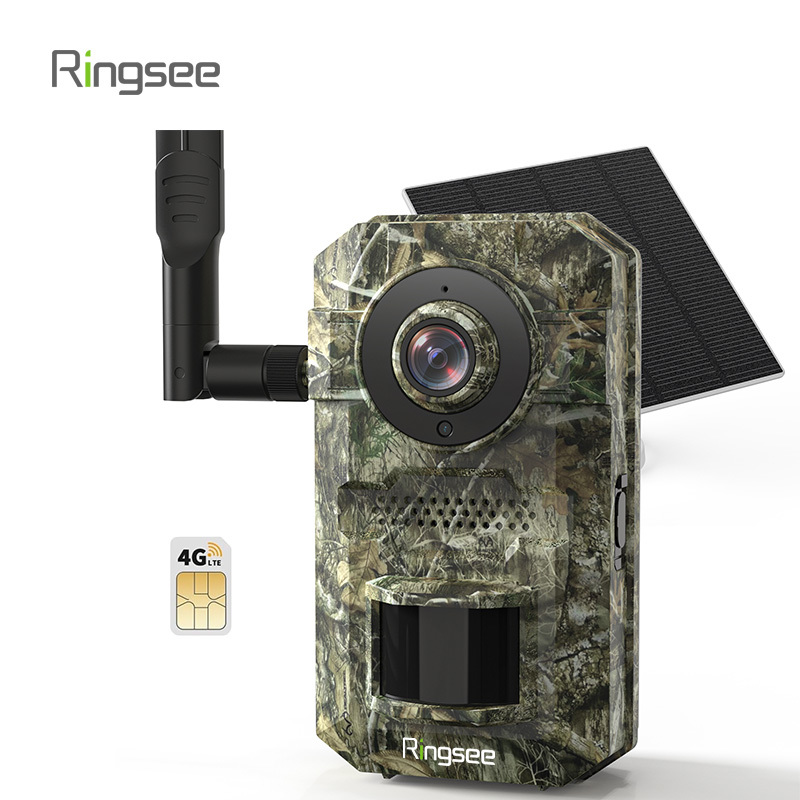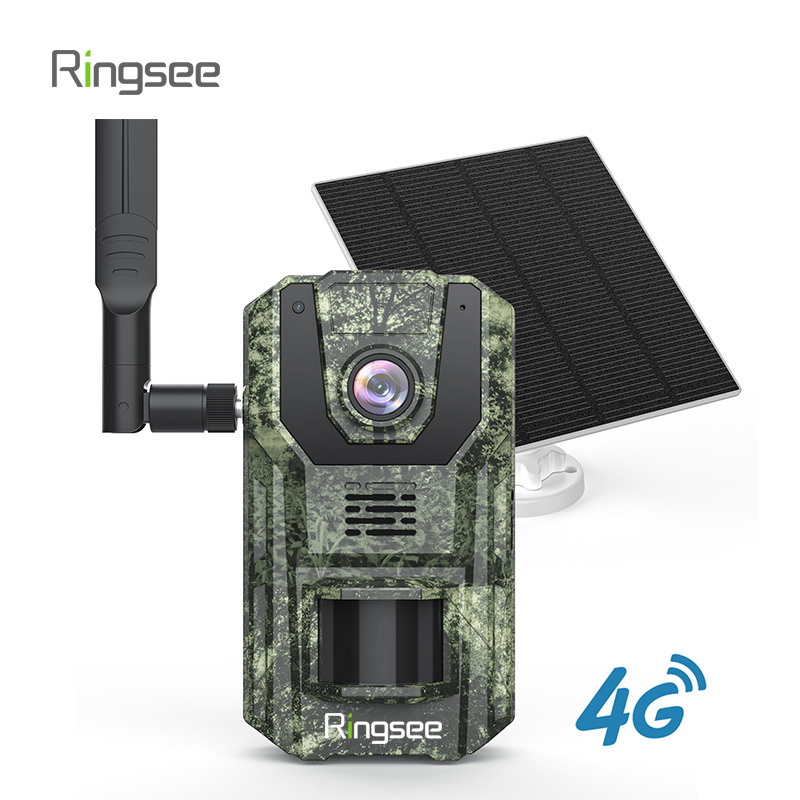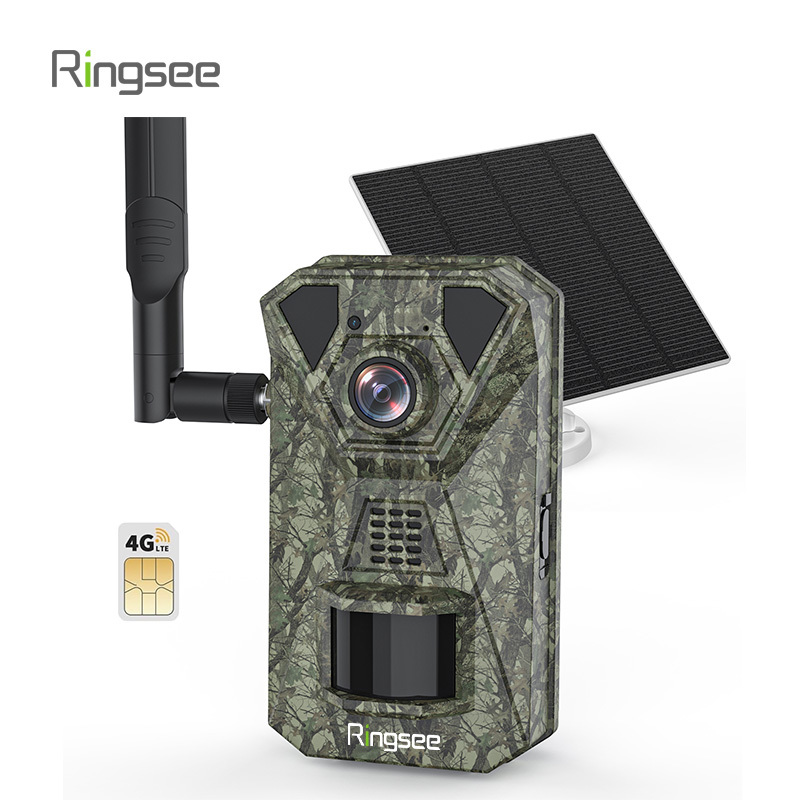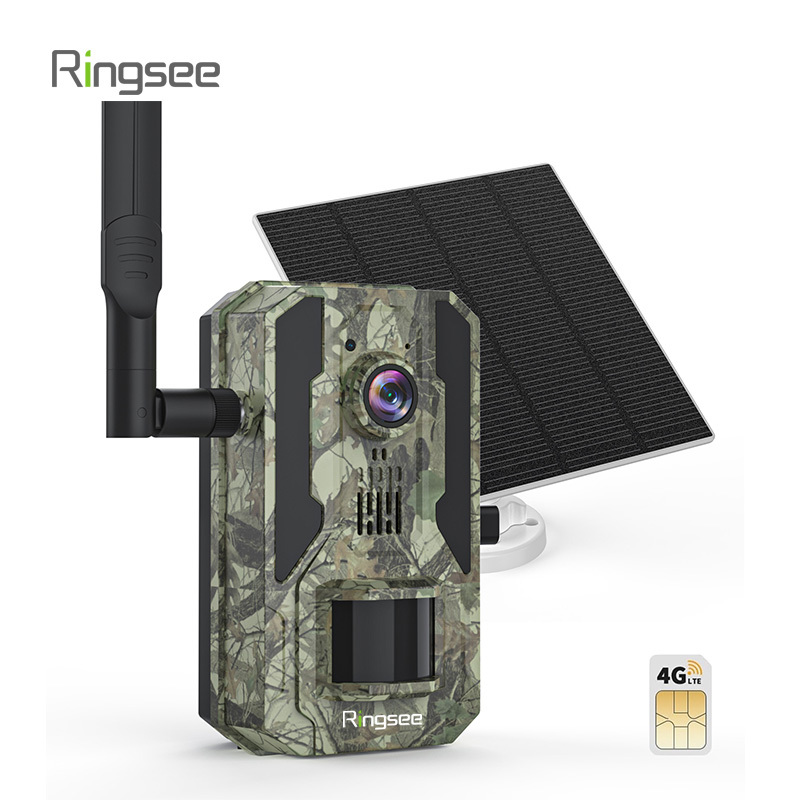How Solar-Powered Wildlife Cameras Are Changing Conservation: What to Know & What to Buy
Publish:
2025-10-10 10:12
Source:
https://www.ring-see.com
Introduction: A New Era for Wildlife Observation
From dense African jungles to the Arctic tundra, conservationists face a universal challenge — how to monitor wildlife effectively without disturbing their natural environment.
The solution is increasingly powered by sunlight.
Solar-powered wildlife cameras are transforming how researchers, park rangers, and nature enthusiasts record the hidden world of animals. These cameras, combining renewable energy, AI intelligence, and 24/7 remote monitoring, are now vital for biodiversity studies, anti-poaching initiatives, and sustainable environmental management.
This article dives deep into how solar wildlife cameras are changing conservation, what features matter most, and how to choose reliable models from trusted manufacturers like Ringsee—a Chinese leader in low-power solar camera production.
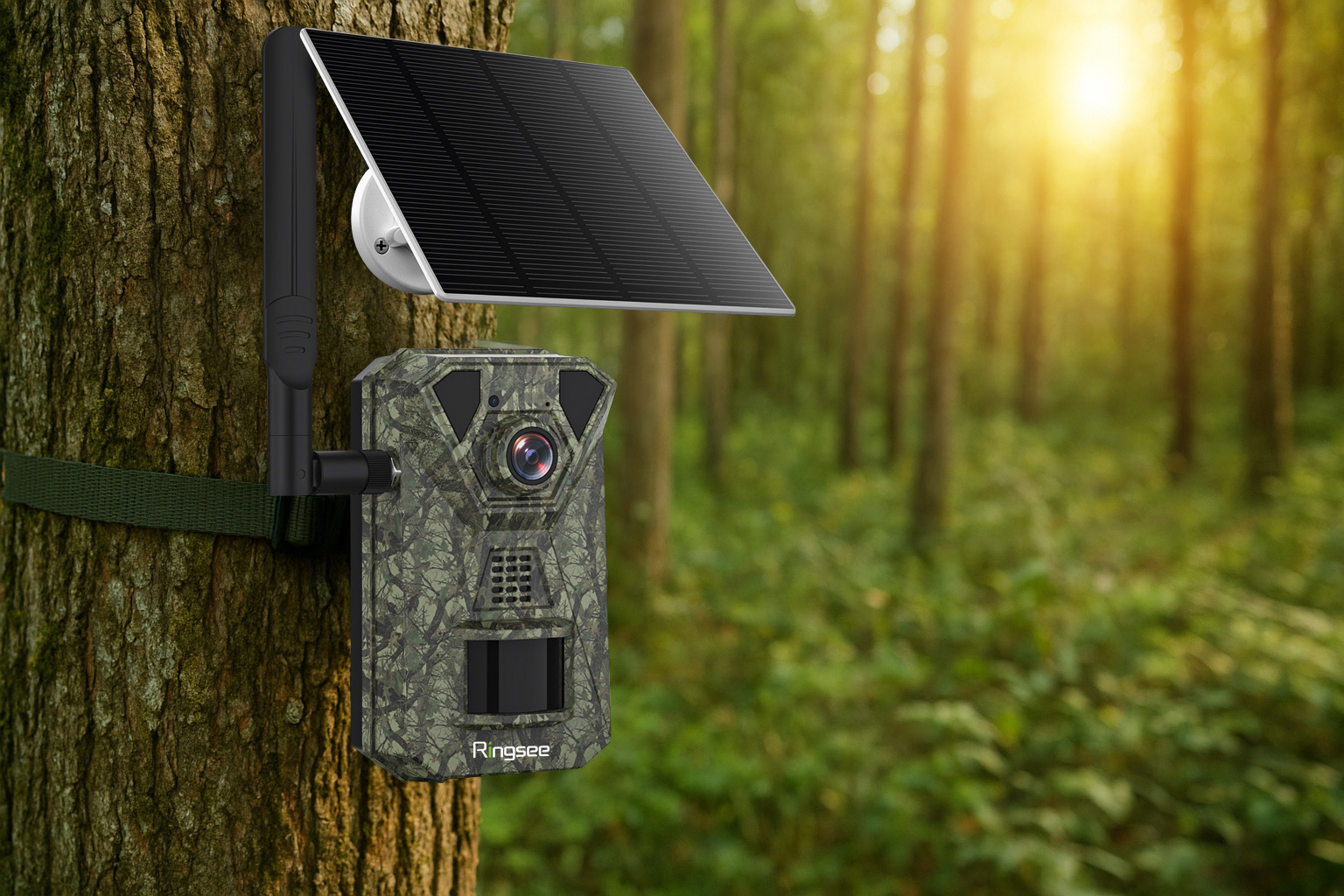
Why Solar Power Is Revolutionizing Wildlife Monitoring
The Limitations of Traditional Wildlife Cameras
Conventional wildlife cameras rely on disposable batteries or electricity, making them costly and difficult to maintain in remote habitats. Researchers often travel long distances to replace batteries—interrupting data collection and leaving gaps in long-term studies.
Even worse, frequent human visits can disrupt animal behavior and damage sensitive ecosystems.
The Solar Advantage
Solar-powered cameras solve these issues through self-sustaining operation and minimal environmental impact. By harvesting sunlight, they can function continuously for months, even in shaded or low-light areas.
Key benefits include:
- Unlimited Energy Source – Operates continuously off-grid
- Hybrid Power System – Solar panel + built-in rechargeable battery
- Low Environmental Impact – No need for frequent human presence
- Lower Maintenance Cost – Long-term savings and reliability
- This makes them indispensable for research projects and protected reserves that require non-intrusive, long-duration monitoring.
Core Technologies Behind Modern Solar Wildlife Cameras
The best solar wildlife cameras integrate multiple advanced systems—power management, imaging, AI, and wireless transmission. Let’s break them down:
1. Solar + Battery Hybrid System
High-efficiency solar panels provide daytime charging, while internal lithium batteries ensure night-time operation.
Manufacturers like Ringsee optimize this process with intelligent power management, enabling 24/7 uptime in harsh or shaded environments.
Tip: Choose cameras with low-power modes and at least 10,000mAh battery capacity for reliable performance.
2. High-Resolution Lenses & Wide Dynamic Range
Wildlife cameras must perform under unpredictable lighting. A 4MP or higher resolution with WDR (Wide Dynamic Range) ensures clear, detailed images from sunrise to dusk.
Some modern designs even include dual or triple-lens configurations, combining panoramic and zoom capabilities—ideal for large conservation areas.
3. Infrared & Full-Color Night Vision
Nocturnal observation is critical in wildlife research. Infrared night vision captures animals without disturbing them, while starlight sensors deliver color clarity in low-light environments.
Ringsee integrates AI-enhanced IR control, automatically balancing exposure to conserve energy and improve image quality at night.
4. AI Motion Detection & Smart Recognition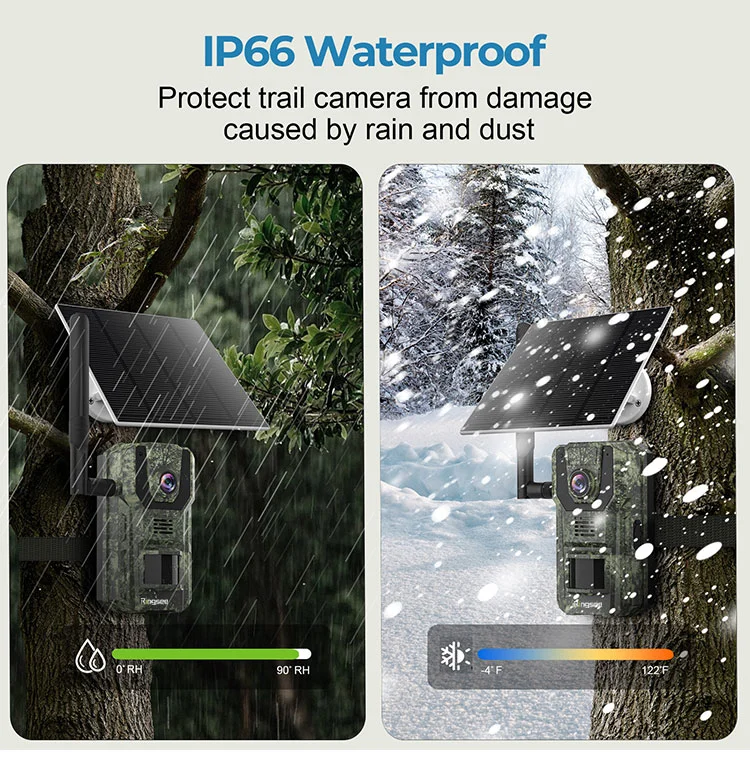
Traditional motion sensors often trigger false alerts caused by wind or light changes. AI-powered wildlife cameras can distinguish between animals, humans, and environmental motion, delivering accurate, meaningful data.
Advanced models can even identify animal species and patterns—enabling smarter analysis and predictive reporting.
5. Connectivity: 4G or Wi-Fi
Connectivity determines how quickly you can access your data.
Wi-Fi models are ideal for fixed, short-range observation sites.
4G solar wildlife cameras (like those from Ringsee) use SIM cards to send data or alerts directly to mobile apps and cloud platforms—perfect for off-grid locations.
6. Durability & Weatherproofing
Wildlife cameras must survive all conditions—rain, snow, dust, and heat. Look for:
IP66/IP67 waterproof ratings
UV-resistant shells
Anti-corrosion coatings
Anti-condensation seals
Ringsee’s outdoor-grade casings are designed to function from -20°C to 60°C, ensuring stability even in extreme climates.
Traditional Cameras vs. Solar-Powered Wildlife Cameras
| Feature | Traditional Wildlife Cameras | Solar-Powered Wildlife Cameras |
|---|---|---|
| Power Source | Disposable batteries or wired electricity | Solar panel + rechargeable battery |
| Maintenance | Frequent visits to replace batteries | Minimal maintenance, self-charging |
| Runtime | Limited (days to weeks) | Long-term (months or continuous) |
| Environmental Impact | Higher (battery waste, human interference) | Eco-friendly, renewable power |
| Cost Efficiency | Higher operational cost | Lower total cost of ownership |
| Connectivity | Usually SD card only | Wi-Fi / 4G cloud access |
| AI Features | Basic motion detection | AI animal recognition & alerts |
| Best For | Short-term or hobbyist use | Research, conservation, long-term monitoring |
This table highlights why solar wildlife cameras are becoming the new standard for modern conservationists.
Real-World Applications in Conservation and Beyond
1. Wildlife Research & Biodiversity Studies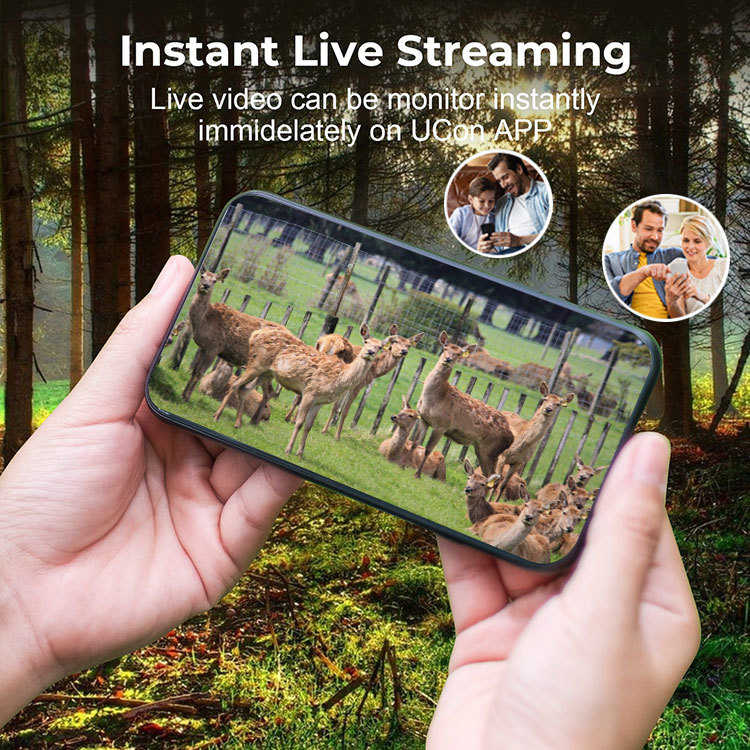
Solar-powered cameras continuously capture activity across day-night cycles, supporting research into animal migration, breeding behavior, and population density.
This non-intrusive monitoring helps scientists collect accurate, long-term datasets for ecological reports and academic studies.
2. Anti-Poaching & Border Surveillance
In many national parks, solar cameras act as remote sentinels. With AI detection and 4G connectivity, they can instantly alert rangers to human intrusions or illegal activity—helping protect endangered species from poaching.
3. Habitat Restoration & Environmental Projects
Reforestation and wetland recovery programs use time-lapse wildlife footage to measure habitat recovery. The return of certain animal species is a strong indicator of ecological balance, making these cameras key tools for progress evaluation.
4. Ecotourism & Educational Outreach
Many wildlife parks use solar-powered cameras to livestream natural events—bird nesting, animal migrations, or predator-prey interactions—connecting global audiences to conservation through education and sustainable tourism.
5. Citizen Science & Outdoor Photography
With more affordable models now available, even nature enthusiasts can participate in monitoring wildlife.
Citizen scientists use solar trail cameras to document animal diversity in local forests and parks—contributing valuable data to global databases like iNaturalist.
What to Look for When Buying a Solar Wildlife Camera
Buying the right wildlife camera depends on your environment, project goals, and budget.
Below are key points to guide your selection.
1. Define Your Use Case
Dense Forests: Prioritize wide-angle lenses and strong IR illumination.
Open Grasslands: Opt for zoom lenses and solar panels with high light absorption.
Wetlands or Coasts: Choose IP67 waterproof designs and anti-corrosion coatings.
2. Evaluate Power and Solar Efficiency
Check:
- Solar panel wattage (at least 5W)
- Battery capacity (10,000mAh or more)
- Power-saving AI modes for low-light days
Ringsee’s low-power AI cameras are specifically engineered for continuous operation with minimal sunlight, ideal for tropical or shaded environments.
3. Prioritize Image & Night Vision Quality
Ensure 4MP+ resolution, WDR, and starlight night vision for 24-hour performance.
4. Storage and Data Management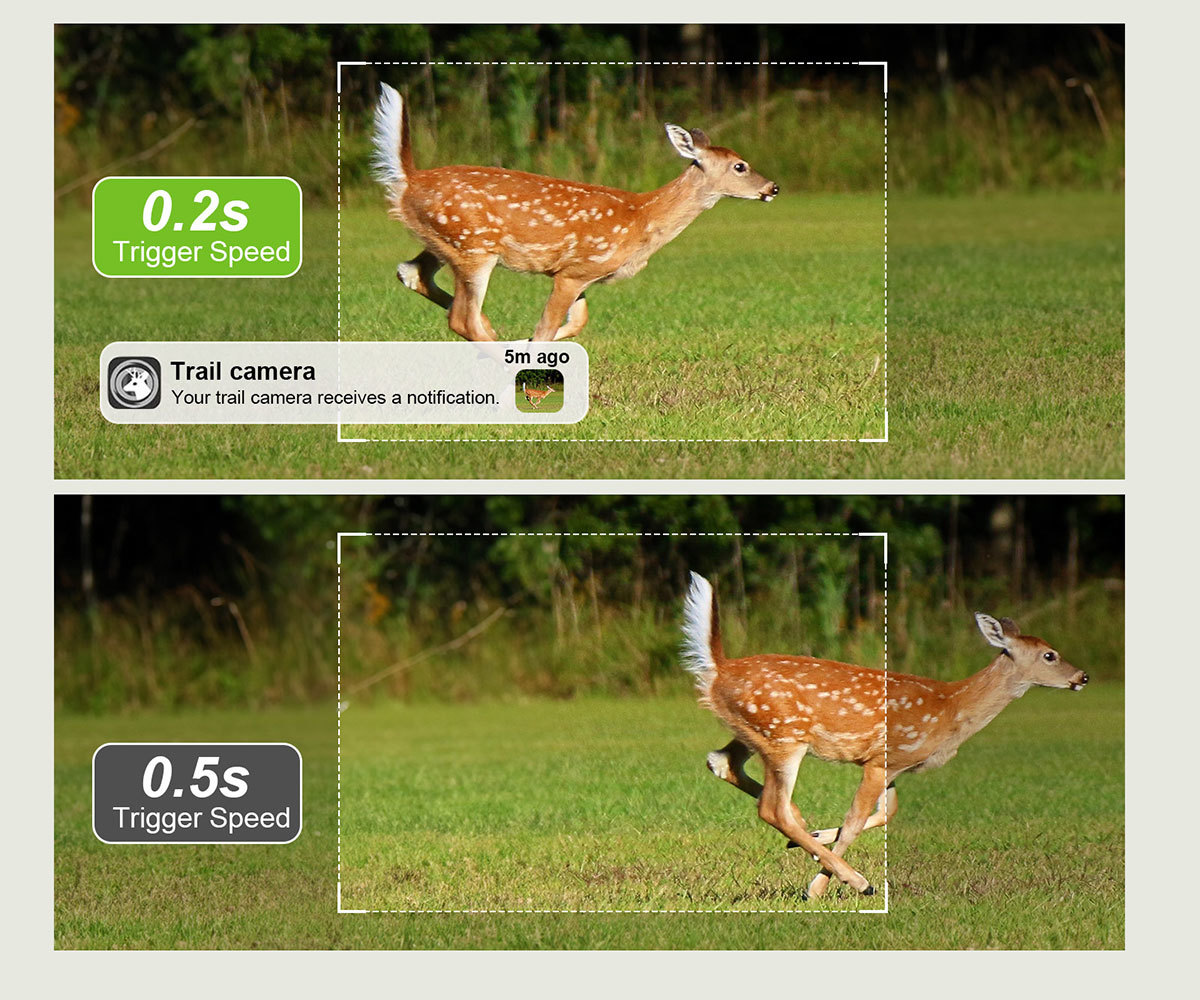
Choose cameras with:
- Local SD storage (64–256GB)
- Cloud storage support
- Encrypted file protection
5. Smart Functions & AI Integration
Modern wildlife cameras often include:
- AI animal recognition
- Human intrusion alerts
- GPS location tagging
- Remote app control and playback
6. Reliable Manufacturer Support
Work directly with established suppliers for long-term success.
Ringsee, a Chinese manufacturer with over 15 years of experience, provides:
- OEM/ODM customization (logo, software, firmware)
- 24/7 technical support
- Global shipping and cooperation for research or security projects
Why Choose Ringsee for Wildlife Monitoring Solutions
Ringsee has built its reputation on combining low-power solar design with AI video analytics.
Their wildlife monitoring cameras include:
Dual/triple lenses for panoramic and zoom coverage
AI-powered recognition to identify animal species and motion patterns
4G & Wi-Fi hybrid connectivity for real-time alerts
Rugged IP67 weatherproof housing
Battery + solar hybrid power system
These advantages make Ringsee’s solar wildlife cameras ideal for remote projects—whether tracking animal populations, monitoring nature reserves, or securing environmental borders.
The Future of Solar Wildlife Cameras
The next decade will see cameras becoming not just observers—but intelligent analyzers.
With advances in AI, edge computing, and IoT, future models will:
- Automatically categorize species
- Analyze behavioral trends
- Upload structured data for global research databases
- Operate entirely autonomously, powered by the sun
- As the planet faces growing biodiversity threats, such systems will be key to protecting species before they vanish.
- Solar and AI technology, together, represent a future where monitoring wildlife is both sustainable and intelligent.
Frequently Asked Questions (FAQ)
Q1. Can solar wildlife cameras work in cloudy or shaded areas?
Yes. Most modern solar cameras, like those from Ringsee, use high-efficiency panels paired with large-capacity batteries. They can operate for several days on stored energy, even without direct sunlight.
Q2. Do solar wildlife cameras need an internet connection?
Not necessarily. Some record locally on SD cards, while others use 4G SIM cards to transmit data remotely. If you’re monitoring in an area without Wi-Fi, choose a 4G model.
Q3. How long can a solar wildlife camera last?
With quality materials and weatherproof design, a solar wildlife camera typically lasts 3–5 years or longer. Regular cleaning of the solar panel helps maintain efficiency.
Q4. Are these cameras suitable for extreme temperatures?
Yes. Ringsee cameras are built for temperatures ranging from -20°C to +60°C, making them suitable for deserts, mountains, and rainforests.
Q5. Can wildlife cameras recognize specific animals?
Some advanced models include AI animal recognition, capable of identifying shapes and movements of common species. This feature is especially valuable in ecological research.
Q6. What’s the difference between a solar trail camera and a wildlife camera?
They’re similar, but trail cameras are usually designed for hunters and hobbyists, while wildlife cameras focus on long-term research, conservation, and monitoring with higher durability and smarter AI features.
Q7. Can I customize wildlife cameras for research projects?
Yes. Ringsee offers OEM/ODM services, allowing custom software, enclosures, and connectivity options for universities, NGOs, or government wildlife departments.
Q8. Do solar wildlife cameras work at night?
Absolutely. With infrared and starlight night vision, these cameras capture detailed nighttime footage without using visible light that could disturb animals.
Final Thoughts
The fusion of solar energy, AI intelligence, and rugged design has transformed how we protect and study wildlife. Solar-powered wildlife cameras offer the perfect balance of sustainability, performance, and reliability for modern conservation efforts. With experienced manufacturers like Ringsee driving innovation in this field, the global community now has access to smarter, greener, and more affordable wildlife monitoring technology. Whether you’re a researcher, park ranger, or nature enthusiast, these cameras empower you to observe without intrusion and protect without limits—one sunbeam at a time.
Related News
How a 4G Solar Camera Protects Your Vacation Home Year-Round
Discover how 4G solar cameras keep your vacation home secure all year, even in remote areas without WiFi or power. Learn how Ringsee, a trusted Chinese manufacturer, offers reliable solar-powered security solutions for holiday homes.
Oct 10,2025
How Solar-Powered Wildlife Cameras Are Changing Conservation: What to Know & What to Buy
Explore how solar-powered wildlife cameras are transforming conservation and biodiversity research. Learn key buying tips, essential features, and discover trusted manufacturers like Ringsee—China’s expert in low-power solar wildlife monitoring systems.
Oct 10,2025
The Ultimate Guide to Solar Trail Cameras: Capturing Wildlife Without Hassle
In this guide, we cover everything you need to know: what features matter, how to choose the right model, practical tips for deployment, and real world examples of how solar wildlife cameras are already making a difference.
Oct 09,2025
Explore the integration of thermal and visible light for night-time security with AI advances. Learn how AI-powered fusion enhances crime detection, border security, and remote facility monitoring. Discover how Ringsee is leading the way in AI-driven surveillance technology.
Oct 09,2025
Regulatory Landscape for AI Surveillance: Global Laws, Privacy, and Ethical Considerations
Explore the global regulatory landscape for AI-powered surveillance. Learn about key laws, privacy standards, and ethical considerations shaping the use of intelligent security cameras from leading manufacturers like Ringsee in China.
Oct 09,2025

